The ultimate two week Norway itinerary
Some links in this post are affiliate links, which means I earn a small commission if you book through them, at no extra cost to you. This support helps keep this site running, the suitcase wheels spinning, and lets me keep writing ultra-detailed travel guides that are free for you to use to plan your next adventure.
Want to know how to spend two weeks in Norway? Whether you prefer slow travel through epic scenery, road trips with plenty of outdoor adventures, or immersing yourself into Arctic life, this guide will help you plan the perfect 2 week Norway itinerary.
From impossibly beautiful fjords to sky-piercing mountains to colourful fishing villages that feel like a step back in time, there is plenty to see, do and experience while exploring Norway in two weeks.
But with the highlights dotted all around the country from north to south, and more than 100,000km (yes, truly!) of coastline thanks to 1700 fjords and a casual 50,000 islands, figuring out how to make the most of your time and money without spending half your trip in transit is easier said than done.
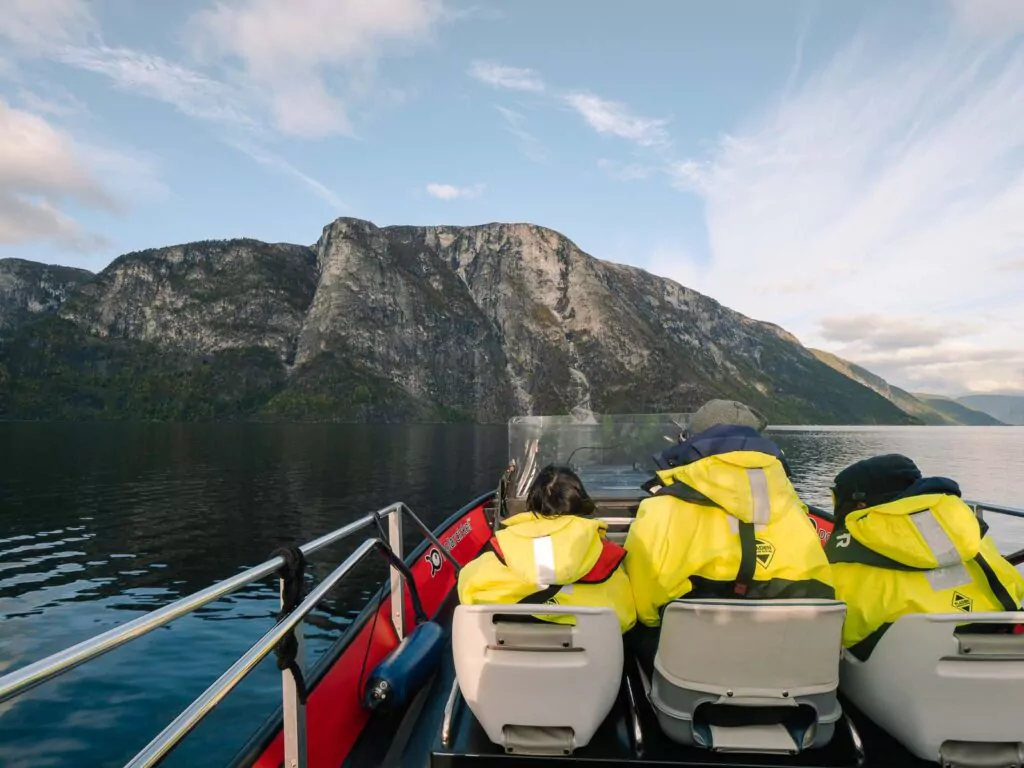
I’ve been to Norway four times now, exploring it from top to bottom by boat, train, bus and car, and each trip has taught me something new about navigating this magical but logistically challenging country.
After travelling the iconic Norwegian Coastal Route from Bergen to Kirkenes, road tripping around the Lofoten Islands, snowmobiling on Arctic tundras, and chasing (and catching!) the Northern Lights more than a handful of times, I’ve crafted four different two week itineraries that showcase the best of Norway while keeping logistics manageable.
There’s a route to suit every type of traveller, from the comfort-seekers who want to sightsee without compromise, to active adventurers keen to spend more time outside than inside, to intrepid travellers keen to explore beyond the tourist trail, to bucket listers who want to fill their cup with main character moments they’ll never forget. No matter your travel style and priorities, I’ve got you covered.
Here is all you need to know before planning your two week Norway itinerary.

Please note this blog contains affiliate links that give me a small commission from any purchase, at no extra cost to you. I would never advertise anything I wouldn’t use myself, and this commission helps Finding Alexx reach more travellers. Thank you for supporting me!
Two weeks in Norway at a glance
I’ve given you four variations of how to see Norway in two weeks, each option will suit a different kind of traveller (or you can pick and choose what you like from each itinerary and DIY your dream trip).
All four options begin with the classic Norway in a Nutshell route:
- 1 day in Oslo
- 1 day in Flåm
- 1-2 days in Bergen

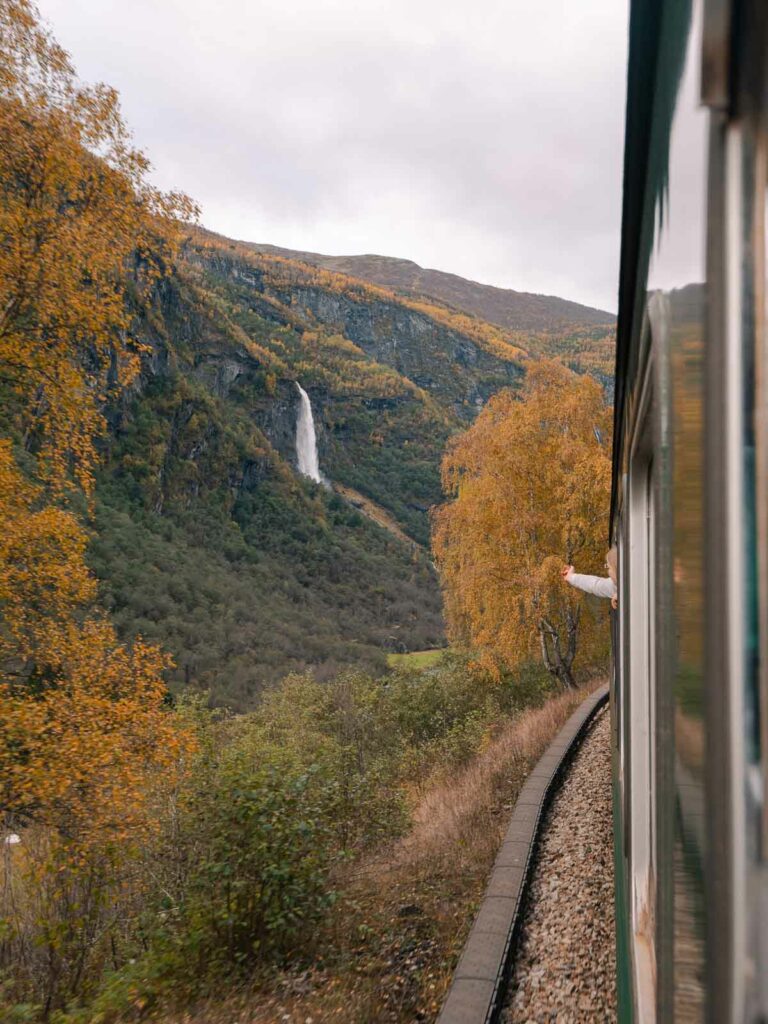
Then you can choose one of these extensions:
- Norway coastal cruise round trip: 12 days sailing on an eco-friendly cruise ship, super chill with stunning scenery, no need to rent a car
- 4 day cruise + Lofoten road trip: Cruise for four days, disembark in Svolvær, rent a car and explore the epic Lofoten archipelago
- 5 day cruise + Vesterålen road trip: Cruise for five days, disembark in the lesser-visited Vesterålen region and road trip around there for equally stunning views without the crowds
- 5 day cruise + Arctic adventures: Cruise for five days, disembark in Tromsø, use it as a base to chase the Northern Lights, hike under the Midnight Sun, or explore the Arctic Fjords. No car needed for this one if you don’t want to drive.
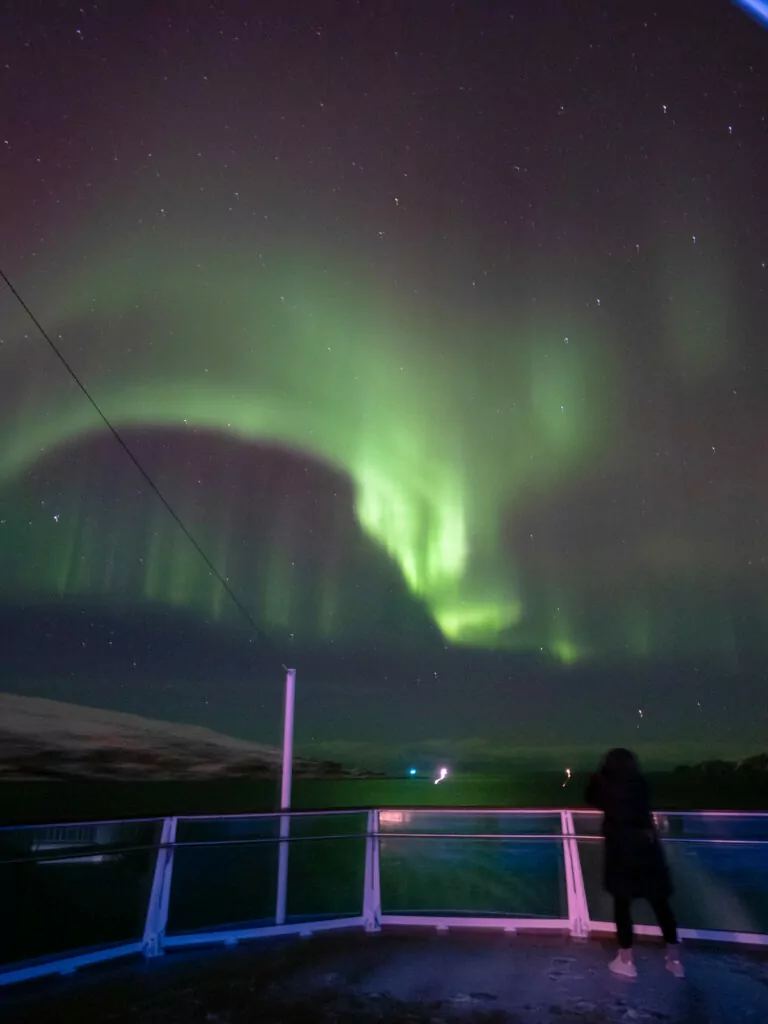
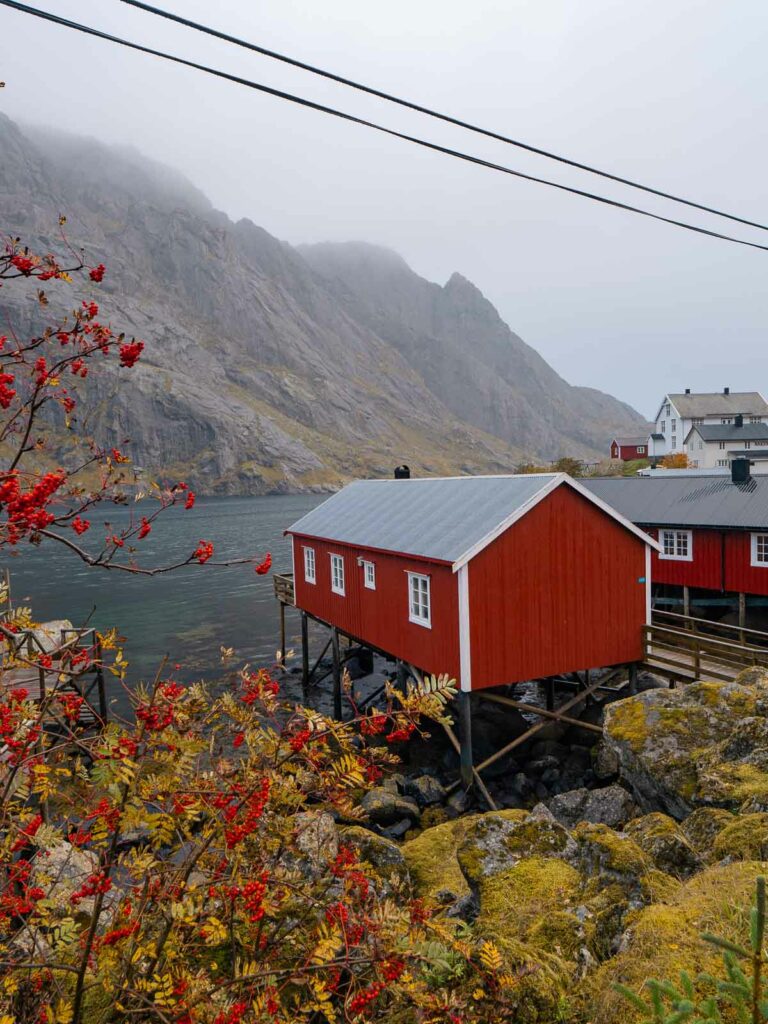
Norway itinerary map
Norway in a Nutshell + the start of the coastal cruise in blue, then I have the rest of the cruise in red, the Lofoten road trip in orange, the Vesterålen road trip in yellow, and the Arctic route in green.
The ultimate 2 week Norway itinerary
How this Norway itinerary works
There’s no one-size-fits-all approach to exploring Norway, and your experience in different parts of the country will hugely depend on the season you’re visiting and whether you’re keen to rent a car, prefer to take day trips, or want to go stress-free and sail along the coast.
Because of this, I’m not just giving you one two week Norway itinerary, I’m giving you four to choose from!
First I’ll walk you through the ‘Norway on a Nutshell‘ segment that serves as the foundation for all four itinerary options. This one covers Oslo, Flåm and Bergen, and it’s an iconic Norway tourism experience.
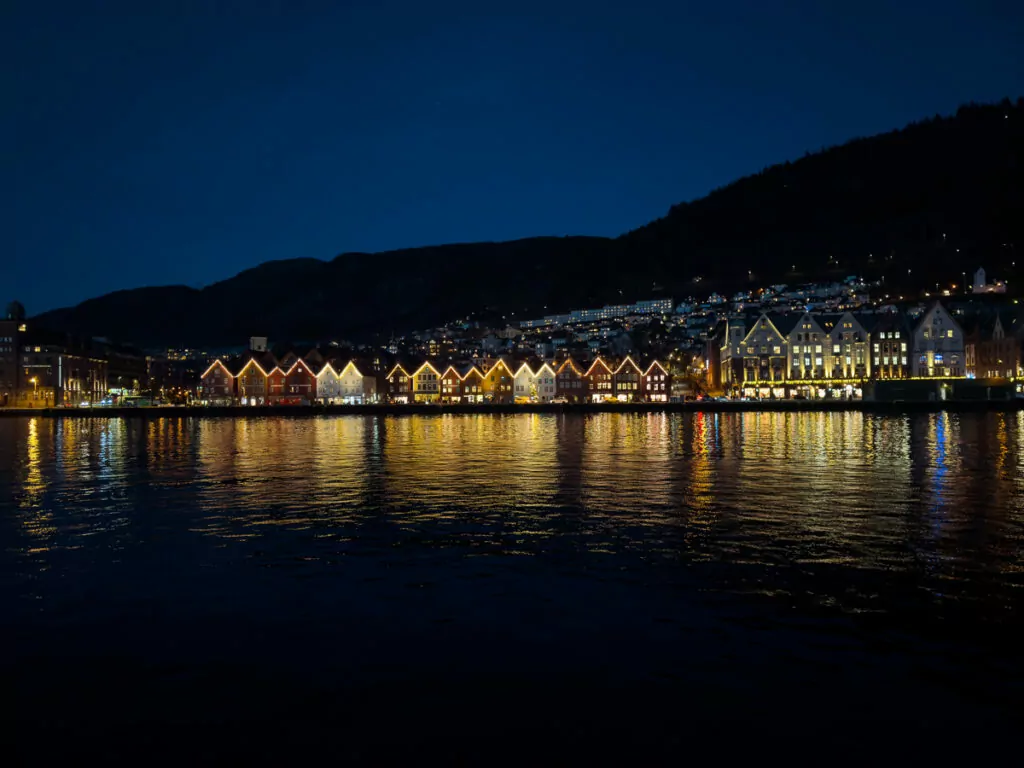
Then I’ll detail four extensions for you to choose from:
- A stress-free coastal cruise up to the tip of Norway and back to Bergen, for those who want maximum scenery with minimum logistics
- A Lofoten Islands self-drive road trip for those seeking insane hikes and some of the most dramatic landscapes in the world
- A Vesterålen adventure for another road trip but in a less touristy area that’s still way under the radar
- An Arctic getaway based in Tromsø for the ultimate winter experience without needing to drive in harsh weather conditions
For each destination you’ll get practical information to help plan your trip as well as loads of photos to show you what to expect, so take note of the places that sound (or look) most appealing, check your budget with the expected costs of your accomm and activities, and you’ll have a solid framework for your Norway adventure.
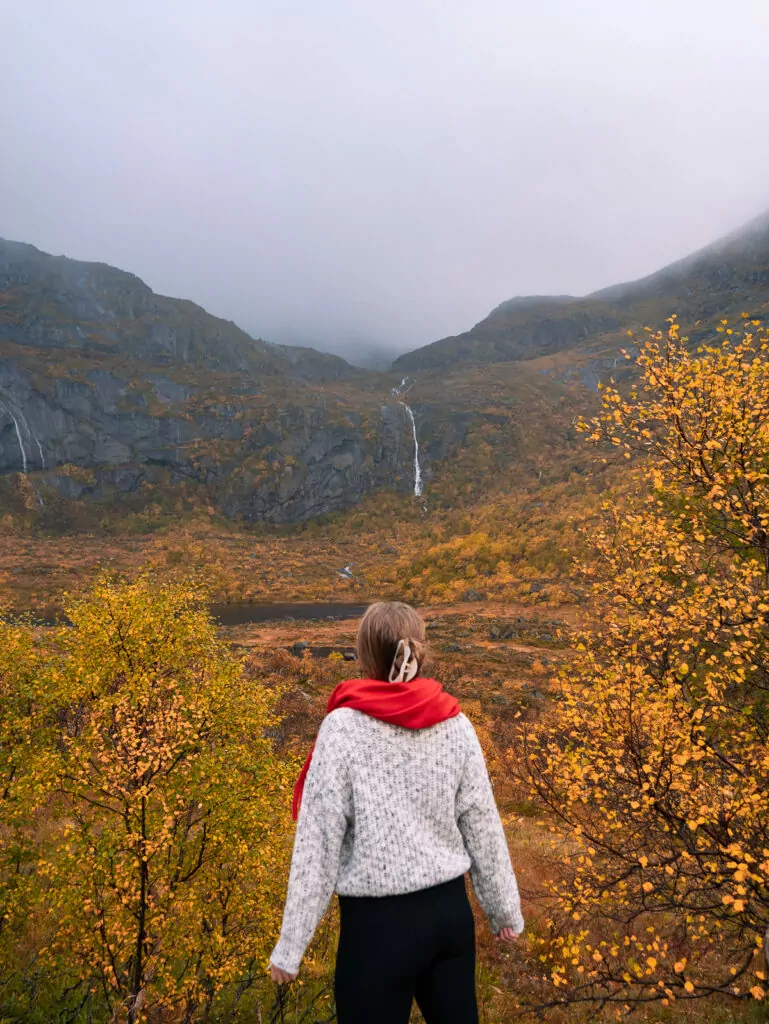
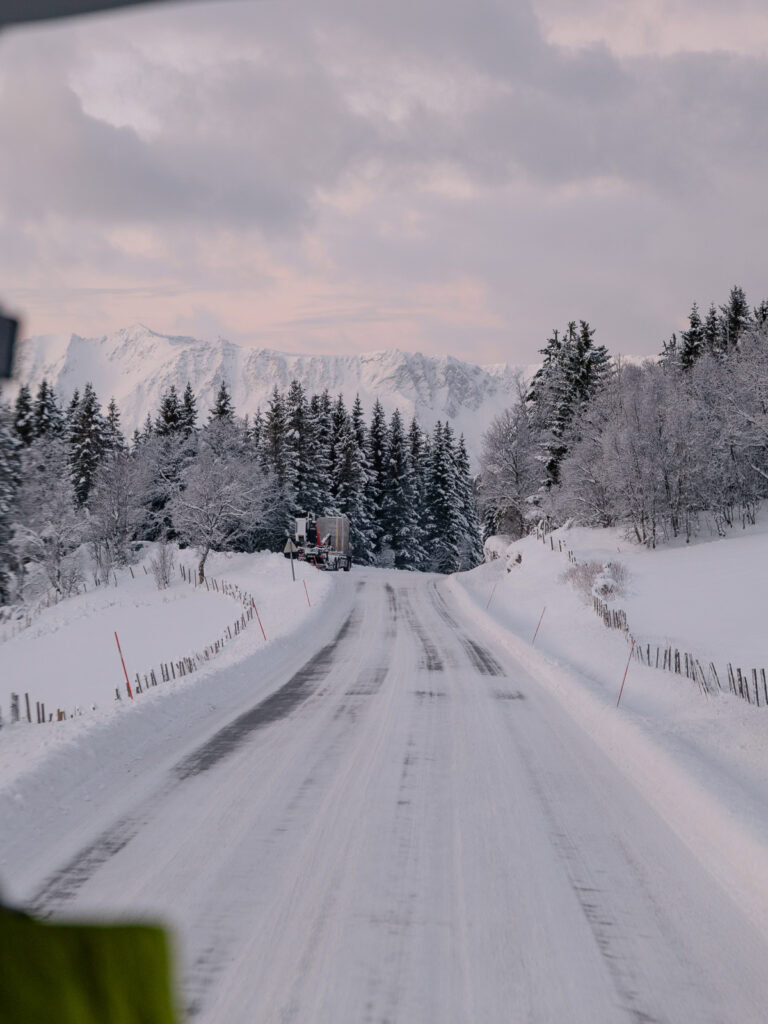
Who is this Norway itinerary for?
These Norway itineraries are perfect for mid-range travellers (or as I like to call us, ‘in-between travellers’) who want to experience spectacular scenery, magical fjords and charming coastal towns without unnecessary internal flights. They’re designed for people who appreciate untouched landscapes, want to tick off some bucket list experiences, and are keen to cover a decent amount of ground (or ocean…) with their 2 weeks in Norway.
I’ve created four different route options that all begin with the classic Norway in a Nutshell segment (Oslo-Flåm-Bergen), then branch out based on your travel preferences. Whether you prefer the ease of a coastal cruise, the drama of Lofoten, the solitude of off-the-beaten-path adventures, or the magic of the Arctic, there’s an option for you.
None of the itineraries require any internal flights until departure day, and options one and four can be done without renting a car if you want to avoid driving.
I’ve also listed some options for shorter or longer itineraries like one week in Norway or three weeks in Norway at the bottom of the blog.
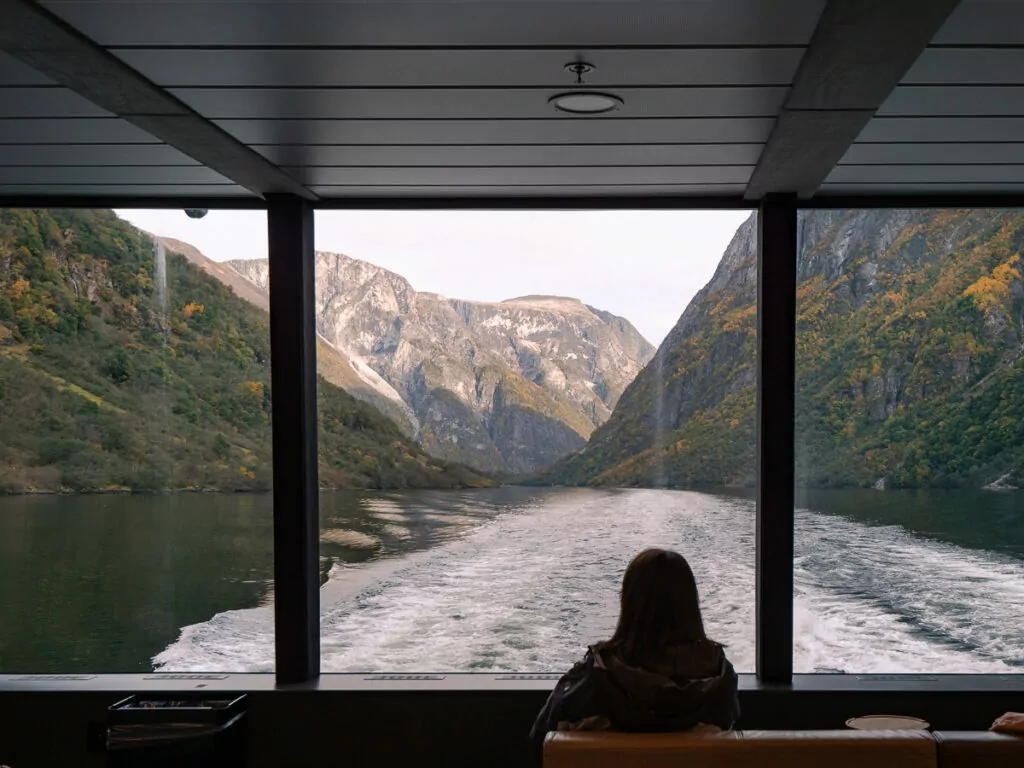
Core itinerary: Norway in a Nutshell (1-4 days)
This is the most popular route for travellers coming to Norway for a short trip, whisking you from the capital city to the historical port town of Bergen, via a few iconic train journeys and a fjord cruise. It’s the perfect way to kick off your two week itinerary.
Oslo
How to get to Oslo: Oslo is Norway’s main international gateway, with direct flights from all over Europe and travel hubs further afield, plus train connections to Sweden and beyond.
How long to stay: 1 day
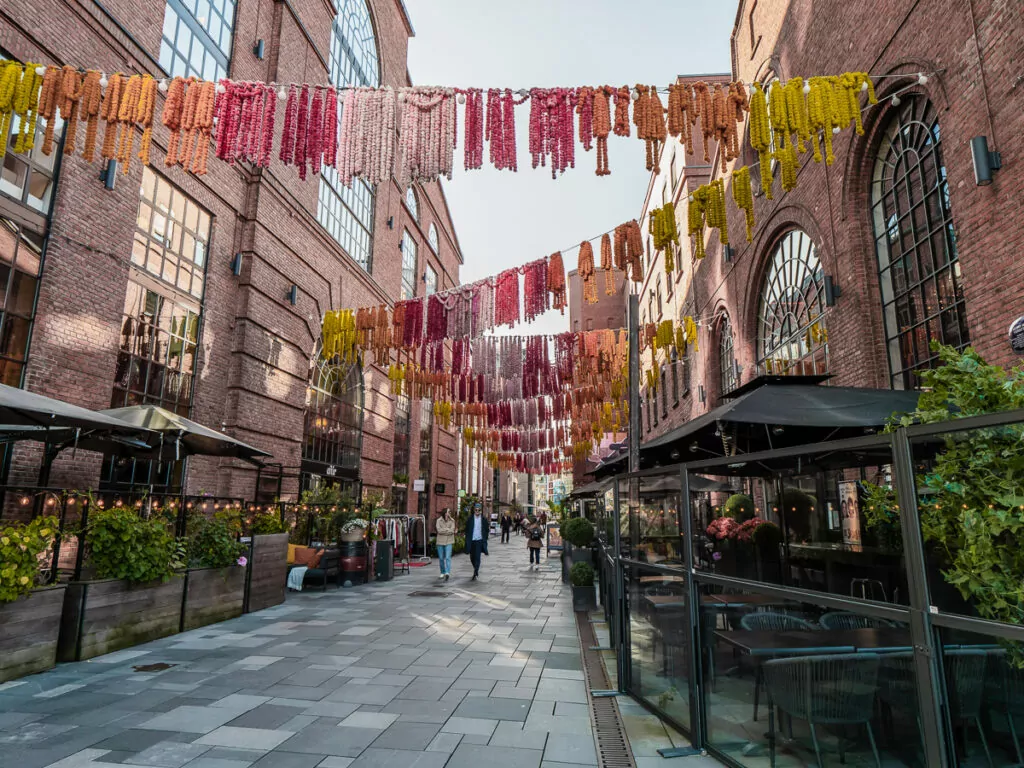
About Oslo
While most travellers rush through Oslo (or skip it altogether) in their eagerness to reach the fjords, with two weeks in Norway it’s certainly worth a day or two if you can swing it.
The city seamlessly blends old with new, and the urban with the outdoors. Historical neighbourhoods have been zhuzhed up with funky bars and quirky boutiques, there are Michelin-starred restaurants (without the waitlists you’ll find in most European capitals…) or budget-friendly-ish street food trucks, you can learn about ancient Viking culture or admire contemporary artwork or anything in between.
If you’re not fussed on Oslo, or if it’s cheaper for you to fly into Bergen, you could drop the capital from your itinerary and go Bergen > Flåm > Bergen in a loop instead. Up to you!
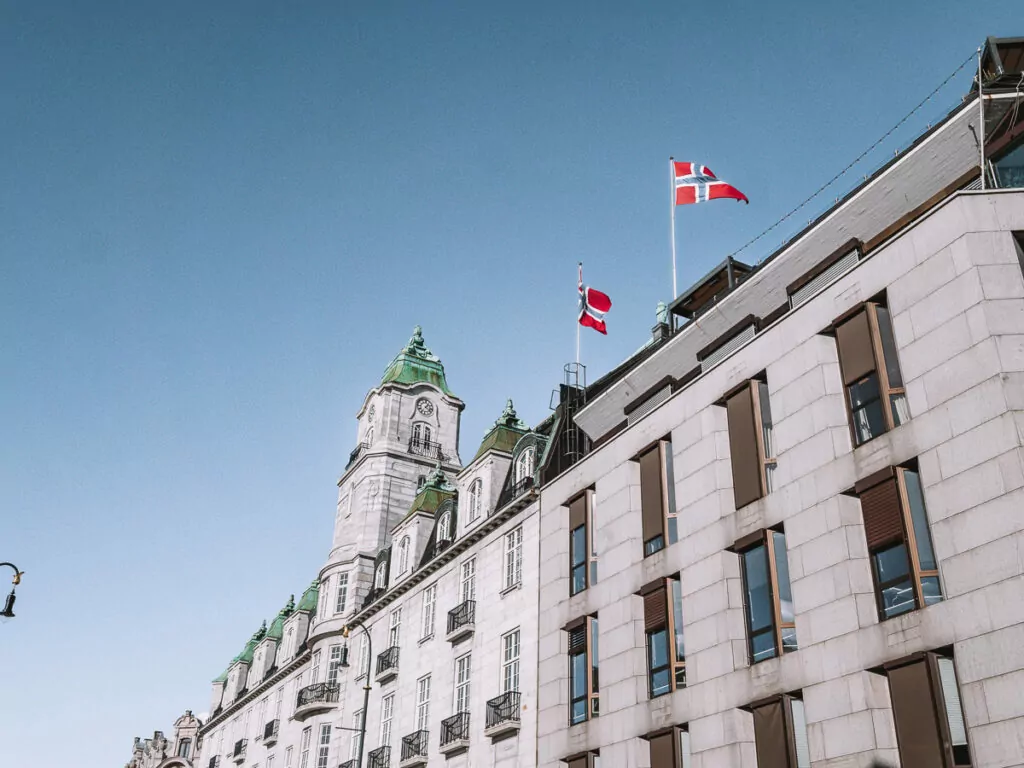
Things to do in Oslo
- Wander around the ultra-modern Oslo Opera House, you can even walk on the roof!
- Learn about the city’s cultural and historical significance with a walking tour
- Explore the weird and wonderful sculptures in Vigeland Park
- Check out the recently revamped Aker Brygge waterfront area for trendy restaurants and super cute shops
- Step back into medieval times at the open-air Norwegian Museum of Cultural History
- Admire Norway’s largest art collection at the National Museum
- See Edvard Munch’s masterpiece, The Scream, amongst loads of other modern pieces at MUNCH Museum
- Get an intro to Norwegian cuisine with this top-rated food tour
- Learn about global gamechangers at the Nobel Peace Center
- Visit the 13th century Akershus Fortress
- Treat your muscles to a waterfront sauna followed by a cold plunge (and repeat)
- My faaaavourite place to eat in Oslo is Mamma Pizza (their pesto burrata casarecce is 🤌🏼) and Mathallen food market is also worth a visit
- There are lots of nature-focused activities from Oslo like fjord cruises, kayaking and hiking tours, but I’d recommend keeping these for later in the trip when you’re in the ultra-scenic regions

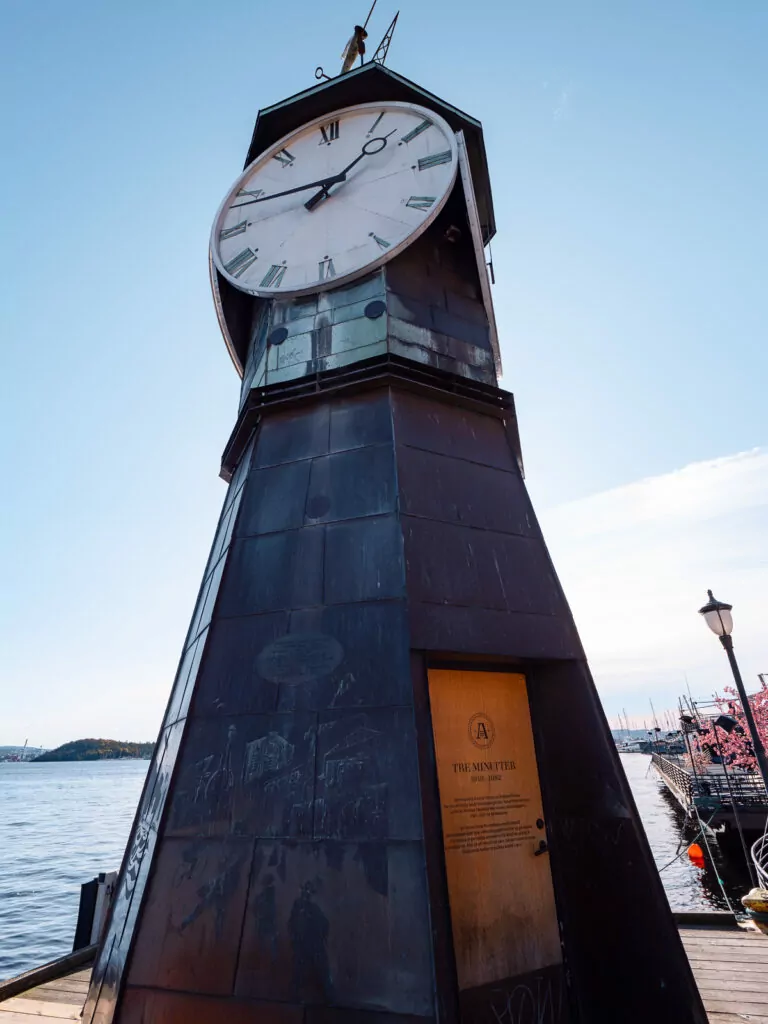
Where to stay in Oslo
Budget:
- K7 Hotel (back to basics but they’ve got dorm rooms and private rooms with access to a guest kitchen and lounge area)
- HI Oslo Haraldsheim (further out of the city but very cheap for Oslo)
- Citybox Oslo (250m from the train station with affordable private rooms)
Mid-range:
- Att Kvadraturen (my go-to for any Oslo city break, comfortable studio apartments with a full kitchen, access to laundry facilities and delicious breakfast at the restaurant next door, just a 12 min walk from the train station)
- Bob W Sentralen (perfectly located smart-hotel with little touches like a polaroid camera to take on your adventures, a yoga mat in each room and breakfast vouchers for handpicked local cafes)
- Thon Hotel Opera (top-rated business hotel right next to the main train station)
- Radisson RED (great value chain hotel with excellent reviews)
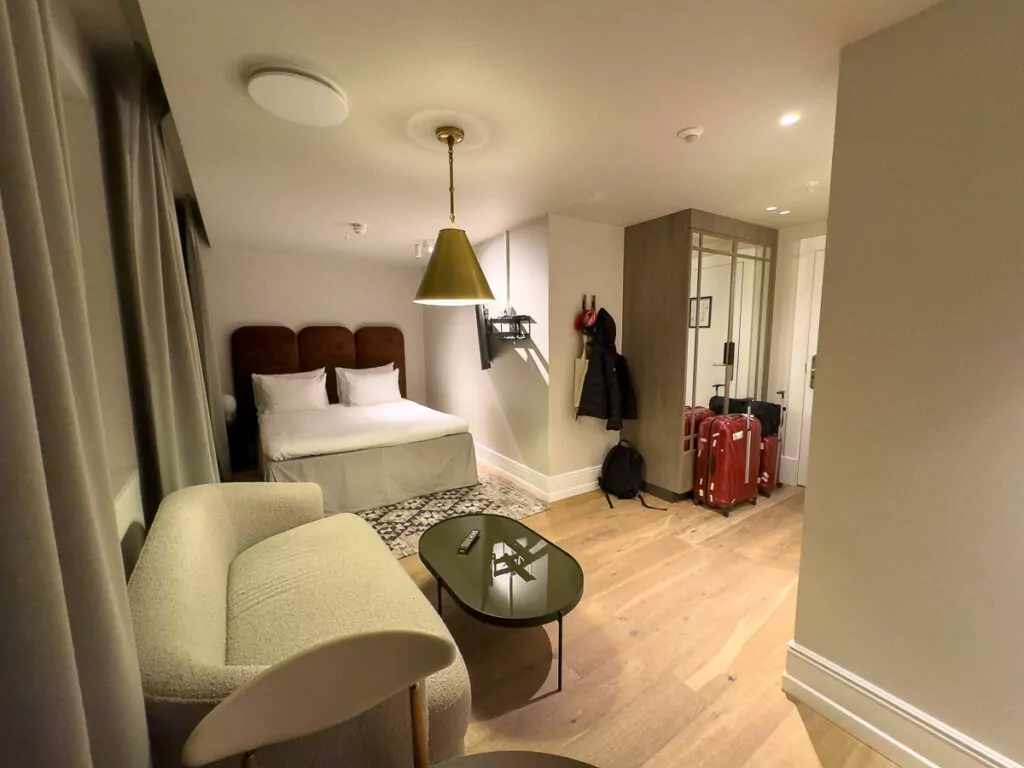
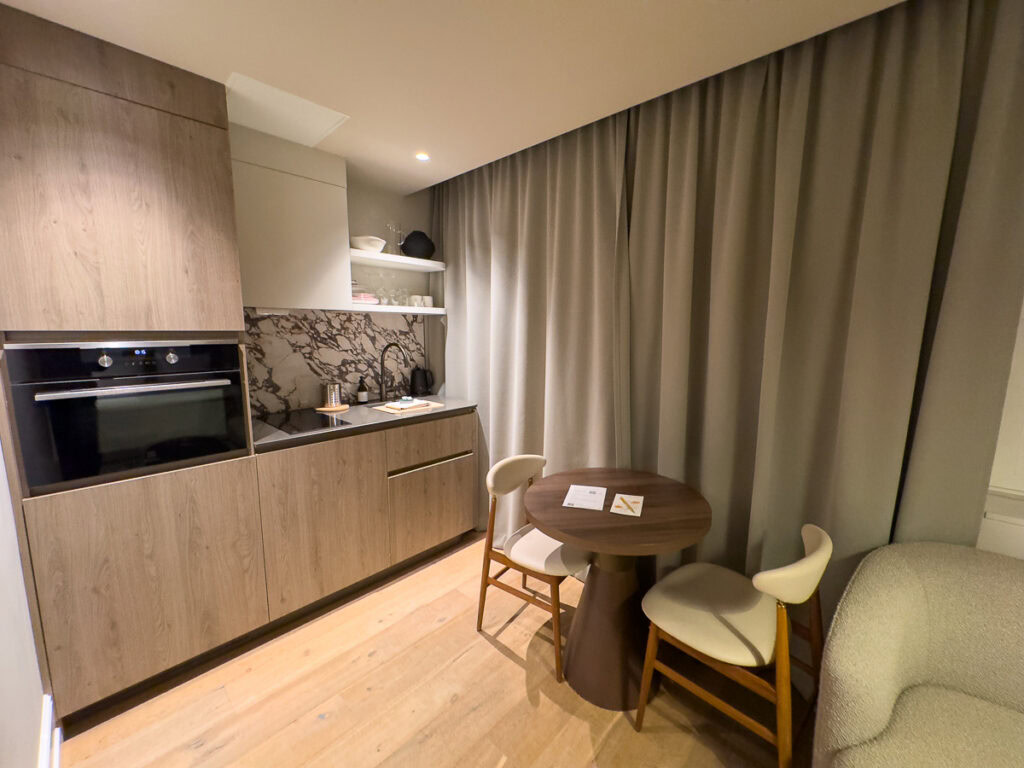
Luxury:
- The Thief (boutique design hotel famous for their impressive breakfast buffet)
- Hotel Bristol (sophisticated luxury hotel with rich history and antique charm)
Flåm
How to get from Oslo to Flåm: Catch the F4 train from Oslo towards Bergen but get off at Myrdal (around 5h), then you catch the iconic Flåm Railway to the village of Flåm (just under an hour)
How long to stay: Day trip or overnight
About Flåm
You know how they say it’s about the journey and not the destination? With Flåm, it’s absolutely about both.
Getting here is half the fun, starting with an ultra-scenic train ride from Oslo to Myrdal along the famous Bergen Railway, then a quick switch to the historic Flåmsbana train for the steep ride down to the fjord-front village. Get a seat on the left side for the best views!
Most travellers only spend enough time here for a sweet treat from Flåm Bakeri before jumping on the Nærøyfjord electric boat for a fjord cruise, then reconnecting by bus to the Bergen Railway to continue their trip to the port city, but I’d really recommend staying at least a night here because there’s a lot more to do than day trippers can fit in.
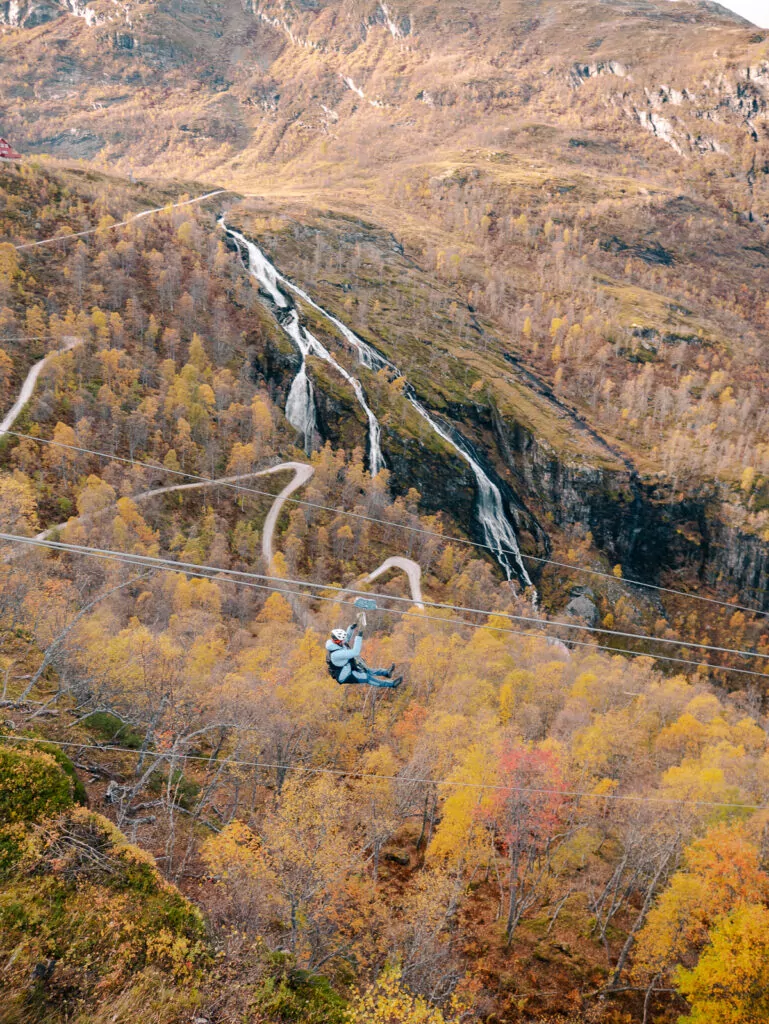
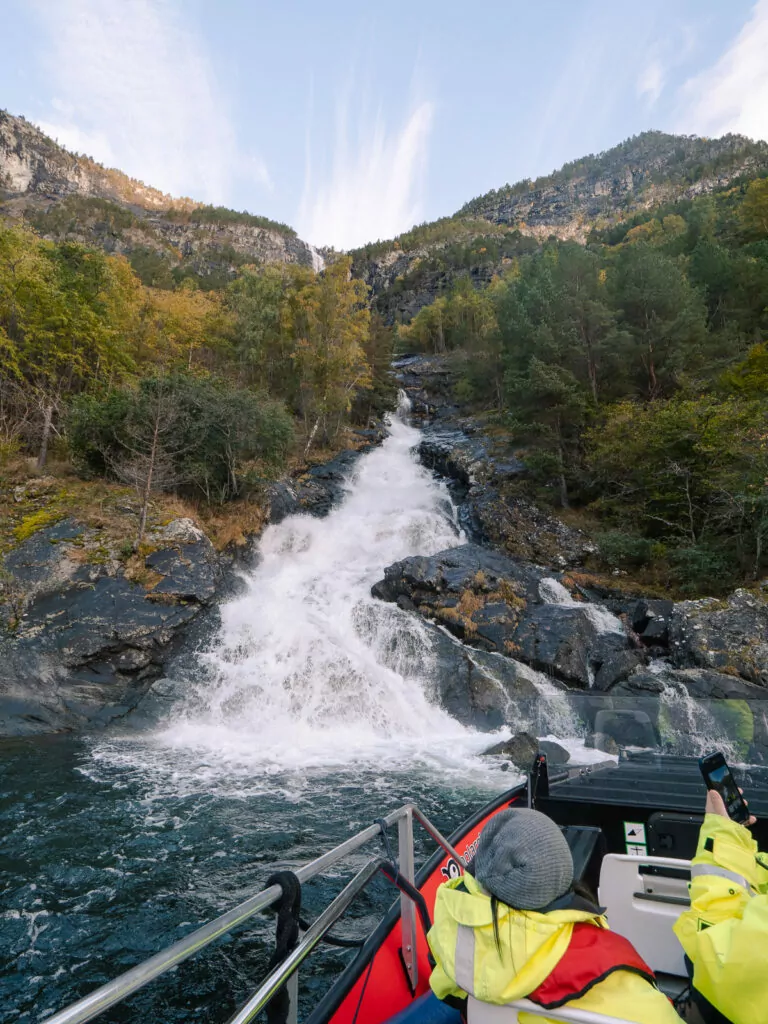
Things to do in Flåm
- Pick your jaw up off the floor of the Flåmsbana, one of the most beautiful train rides in Europe (read my full Flåm train guide before you go)
- Embrace your inner nerd at the Flåm Railway Museum
- Or honour your inner speed demon with an epic fjord safari RIB tour
- Zip down the Flåm Zipline, Scandinavia’s longest zipline, then rent a bike to wind your way back down the valley with pedal-stopping views along the way
- Hike to the panoramic Stegastein viewpoint
- Taste local craft beer at Ægir Brewpub
- If you’ve got a few days to spare, you could book this top-rated 3 day kayaking and camping tour in Nærøyfjord
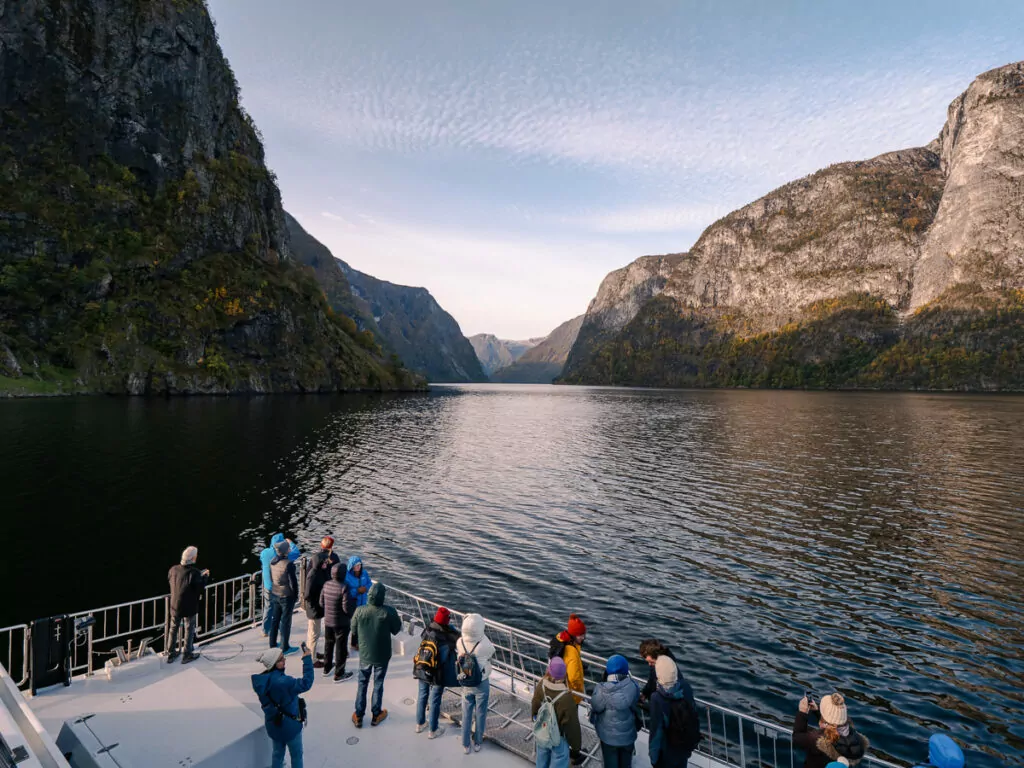
Where to stay in Flåm
Accommodation in Flåm is super, super limited so you need to book in advance to lock in a room. Some places have a minimum two night stay if you book online, but you could email them with your travel date and see if they’ll make an exception for you.
Budget:
- Flåm Hostel (cosy and clean private rooms with shared bathrooms and kitchens)
- They also have Flåm Camping & Cabins on the same site but with different room options, check both!
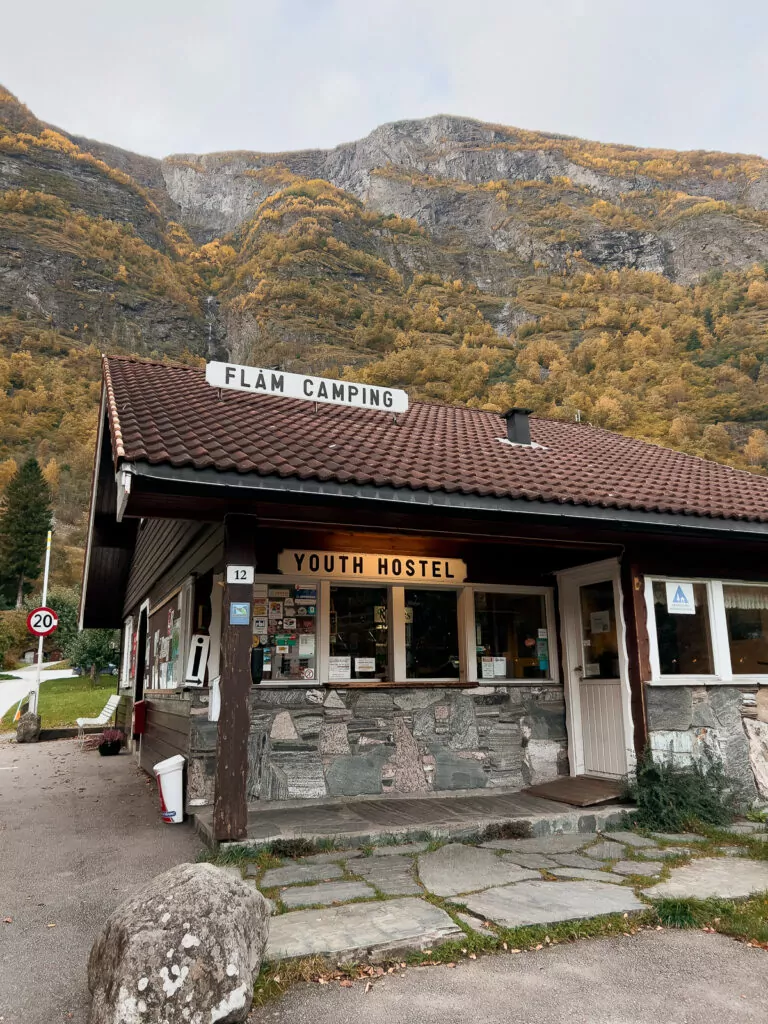
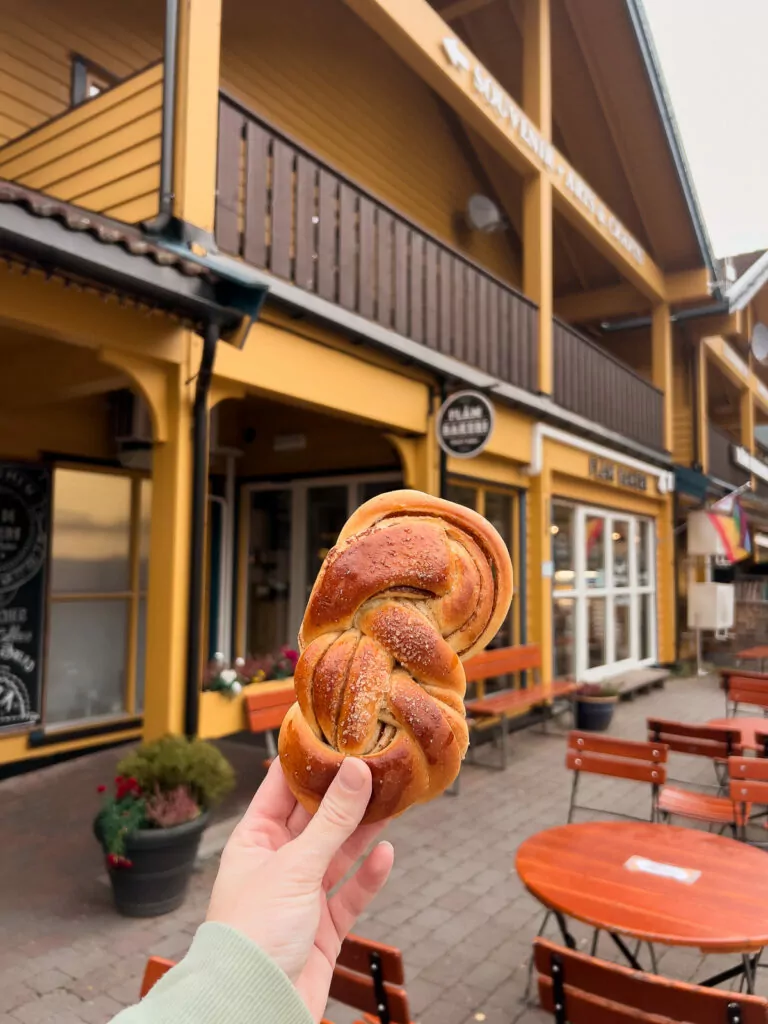
Mid-range:
- Flåmsbrygga (warm and welcoming hotel with Viking vibes, home to the aforementioned Ægir Brewpub)
- Flåm Ferdaminne (full apartment in the village centre)
- Svingen Guesthouse looks beautiful but has very limited capacity so it’s often fully booked
Luxury:
- Wangen Apartments AS in Aurland, accessible by bus from Flåm (Scandi design fjordside apartments with unobstructed views)
Bergen
How to get from Flåm to Bergen: This one has a few steps so it sounds confusing, but it’s a very popular tourist route so there will be lots of other people doing the exact same thing.
- From Flåm’s waterfront (super close to the train station) you’ll jump on the electric boat for the Nærøyfjord cruise to Gudvangen. The scenery is mind-blowing!
- Catch a short bus transfer to Voss station, and you’ll be reconnected with the Bergen Railway
- Catch the next train to Bergen (get a window seat, this is one of the most scenic train journeys in the world
- There’s plenty of luggage space on the boat and bus if you’ve got suitcases with you
- You could also take the Flåmsbana back up to Myrdal and rejoin the Bergen Railway there, but the cruise is hands down a Norway highlight so that’s my recommendation
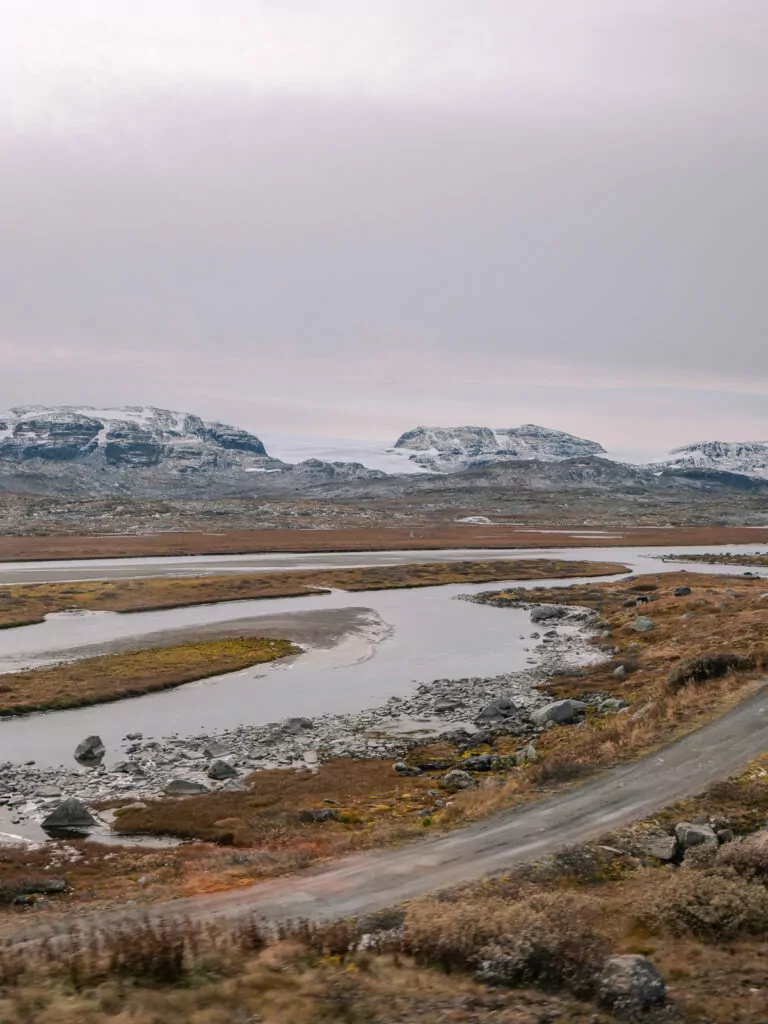

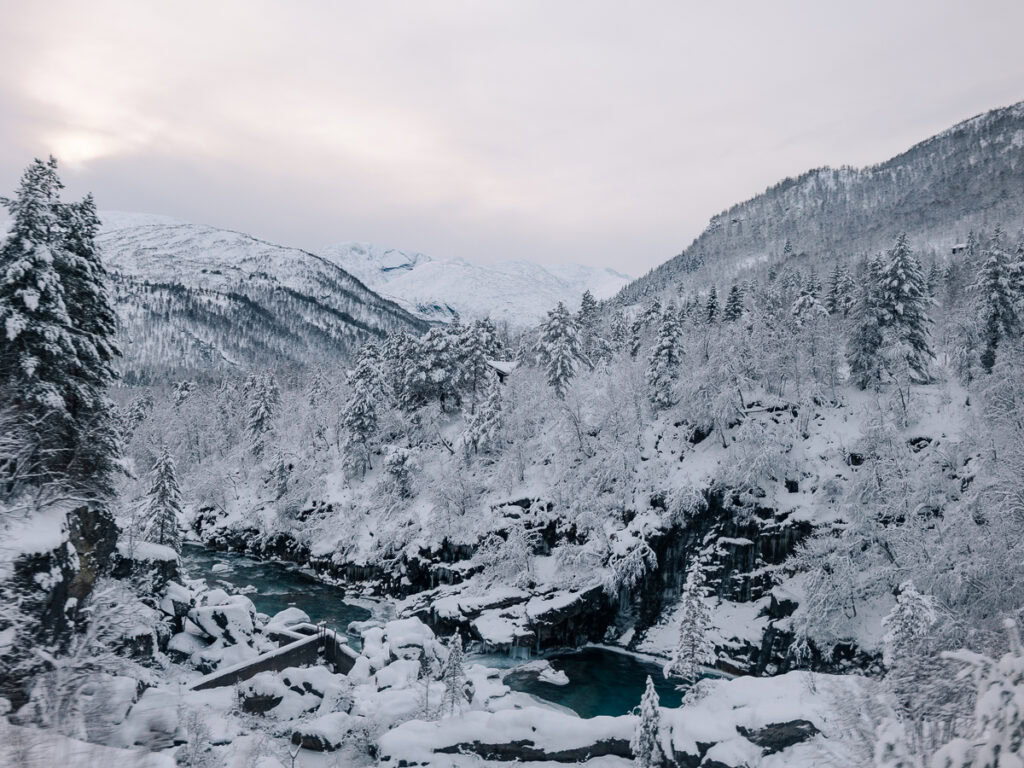
How long to stay: 1-2 days
About Bergen
Bergen is a city of colours and contrasts, with brightly-painted Hanseatic storehouses and urban street art to discover, mighty mountains to ascend and calm fjords to cruise, fine dining restaurants to enjoy and rowdy nightlife to get amongst.

Things to do in Bergen
- Take the Fløibanen funicular up Mount Fløyen for unbeatable views or hike Mount Ulriken for a challenge
- See the red, orange and yellow wonky buildings of the UNESCO-listed Bryggen district
- Join a walking tour or a Segway tour through the winding streets to learn Bergen’s Hanseatic history and modern culture
- Treat yourself to a fancy seafood dinner (Cornelius is one for the bucket list, only reachable by boat)
- Get arty with a watercolour workshop and paint Norwegian landscapes for a take-home souvenir
- Or book a fishing tour where you catch and cook your own meal (well, you try!)
- Sail on an actual Viking ship reconstruction
- Enjoy craft beer or sip on creative cocktails before a classic Bergen night out
- Search for coastal wildlife and enjoy views from the water with a Øygarden Islets kayaking tour

Where to stay in Bergen
Budget:
- City Hotel Bergen (very basic backpacker vibes but great location)
- Bergen Hostel Montana (out of the city but amazing views and easy access to hiking trails, very social)
Mid-range:
- BREEZE Hotel Victoria (brand new with affordable rooms)
- Klosterhagen Hotel (top-rated value option, looks super cosy)
- Citybox (well-priced design hotel in Danmarksplass, slightly out of the city but easy access by public transport)
Luxury:
- Opus 16 (classy luxury hotel in a stunning heritage building)
- Charmante – Skostredet Hôtel (eclectic 5* in the heart of Bergen)
- Bergen Børs Hotel (if you don’t stay here then at least come for a drink at Frescohallen, it’s insane)

Option 1: Norway coastal cruise (stress-free)
How to get to your Norway coastal cruise: The coastal voyage starts in Bergen, so after finishing the Norway in a Nutshell segment you’ll be in the right place!
How long: The round trip voyage is 12 days Bergen to Bergen, if you’re limited to exactly 14 days in Norway then you’ll want to do the Oslo-Flam-Bergen trip in 1-2 days and then get straight on the boat to make it fit. You can also do a 7 day northbound voyage to Kirkenes and fly from there, or there are shorter voyages which are used in options 2, 3 and 4.
Best time of the year: Depends on what you’re looking for! Summer brings midnight sun and endless sightseeing hours, spring and autumn give you vastly different scenes north to south, and the winter months are nothing less than a wonderland. The Northern Lights are best viewed between October and March.
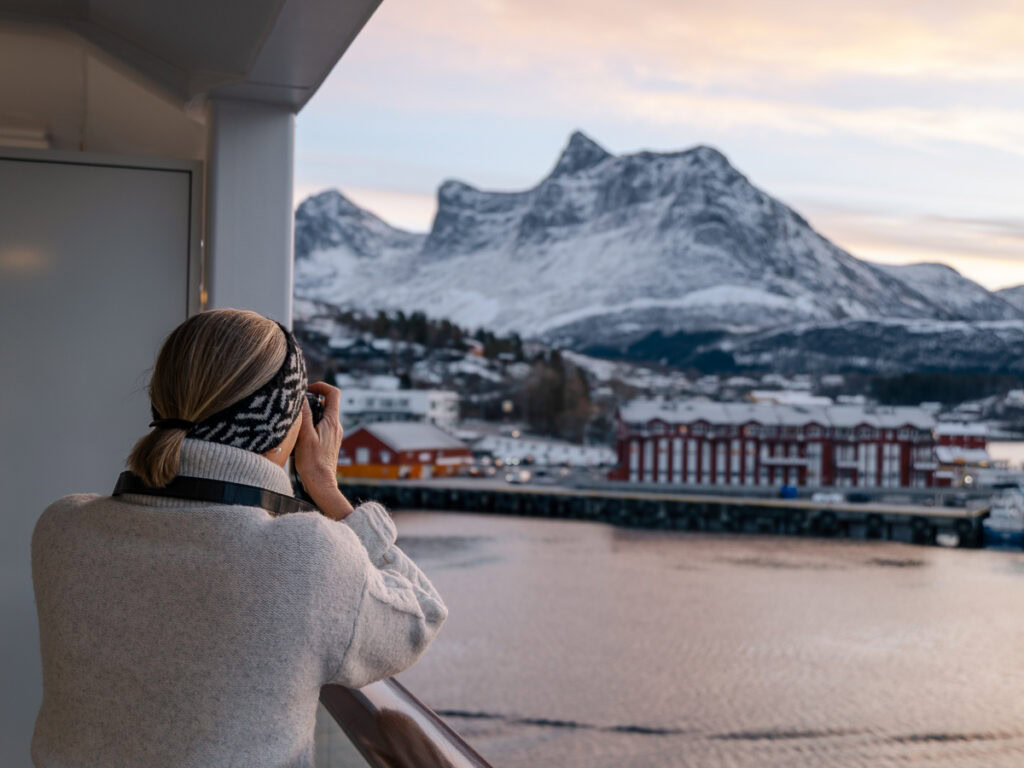
About the Norwegian Coastal Route
If you’re more of a watch-the-world-go-by kind of traveller rather than needing to be the one steering the proverbial ship, a Havila coastal cruise is by far the most relaxing way to experience Norway’s magic.
This isn’t your typical cruise though, if you expect a mega ship with cabaret shows and karaoke bars carrying thousands of passengers from town to town then you’ll be disappointed. But if you’re looking for a more intimate sailing experience, spacious lounging areas with floor-to-ceiling windows, and the confidence that you’re supporting a local business with genuine commitment to eco-friendly cruising (more on this below), you’ll love it.
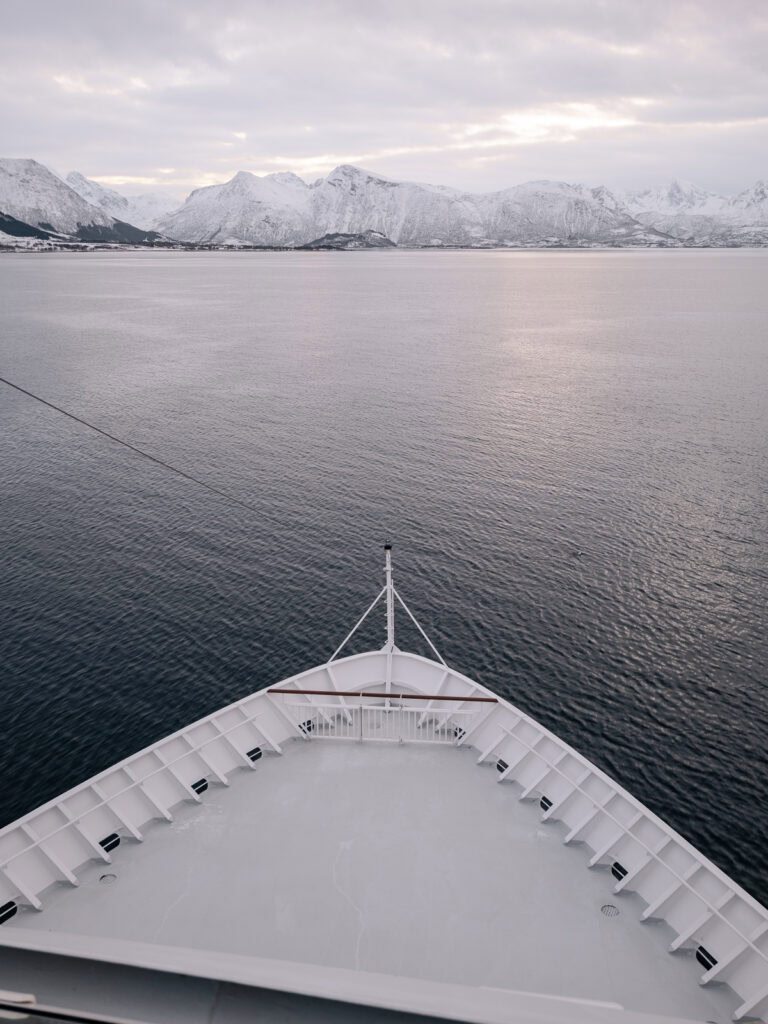
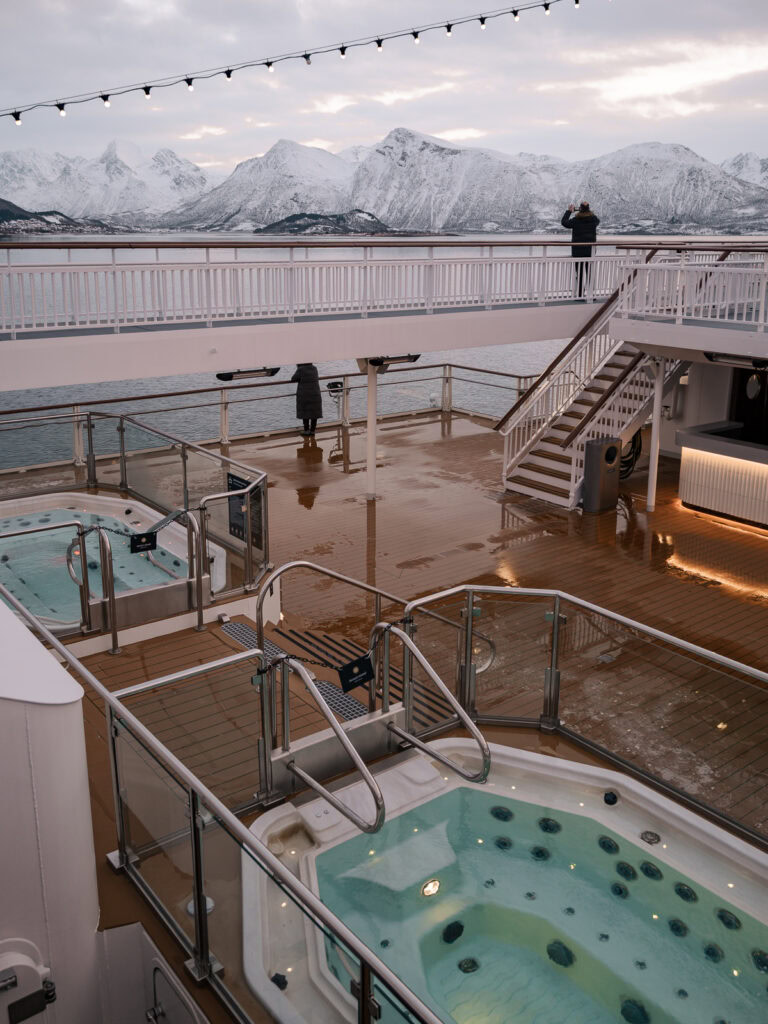
The Norwegian Coastal Route (also called the Norwegian Coastal Express, Kystruten, or ‘Hurtigruten’, named after the original shipping company that began sailing this journey in the late 1800s) is a working sea passage that carries local passengers, freight and tourists between remote communities all along Norway’s coast, from Bergen all the way up around the North Cape and to Kirkenes, right by the Russian border.
As with any Norway trip, the season you visit drastically impacts your experience. I did the Havila Round Voyage (minus one day) in late November which had limited sunlight hours for exploring, but we were treated to the most incredible sky colours during the day and the aurora came alive on five of the ten nights I was on the ship. Absolute magic.

Highlights along the Norwegian Coastal Express
- The UNESCO World Heritage-listed Geirangerfjord, truly one of the most beautiful places I’ve ever seen in my life
- The Art Nouveau architecture of Ålesund
- Wandering through Trondheim
- Crossing the Arctic Circle
- Exploring fishing villages in the Lofoten Islands*
- Dancing under the midnight sun in summer or the Northern Lights in winter
- Learning about Sami culture*
- Visiting Tromsø’s iconic Arctic Cathedral
- Sailing around the North Cape, the northernmost point of the mainland European continent
- Hitting the Arctic snow-capped mountains on four wheels with an ATV tour*
- Discovering lesser-known Vesterålen’s dramatic scenery
*These experiences are part of ship excursions

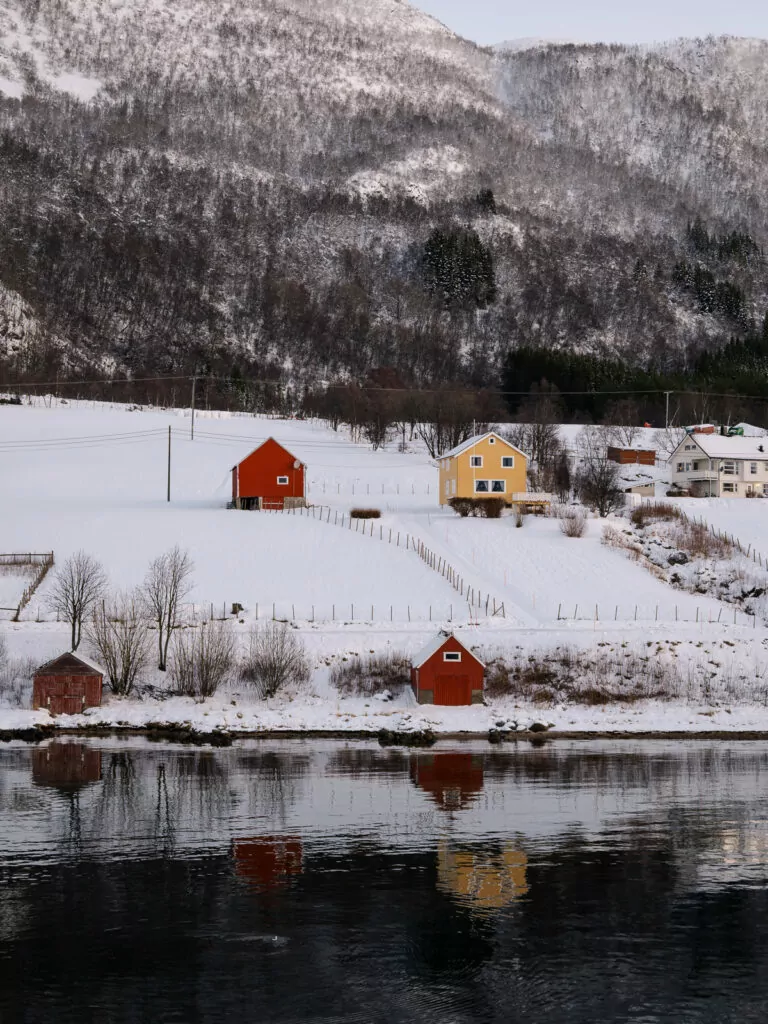
Practical tips for the Norwegian Coastal Route
- If you can afford it, a room with a balcony is 1000% worth it
- Take snacks, voyages include full board but meal times are inflexible so if you get hungry between meals you’ll want some chips, biscuits or sweet treats to tide you over
- Pack layers regardless of season, conditions can change rapidly
- The Norwegian Coastal Express is primarily a transportation route, sightseeing comes second. There are 34 port calls in each direction, ranging from 15 minutes to a few hours, it’s not the kind of ship where you arrive somewhere in the morning and have the entire day to explore your destination.
- The longer stops with time for independent exploring are Ålesund, Trondheim, Bodø, Svolvær, Tromsø, Honningsvåg and Kirkenes
- Havila have a Northern Lights Promise from October to March, if you book a Round Voyage and the Northern Lights don’t show up, you’ll get a free one way voyage!
- The upfront cost might give you a fright but honestly when you add up 12 days of food, accommodation and transportation in Norway, the value for money is pretty decent
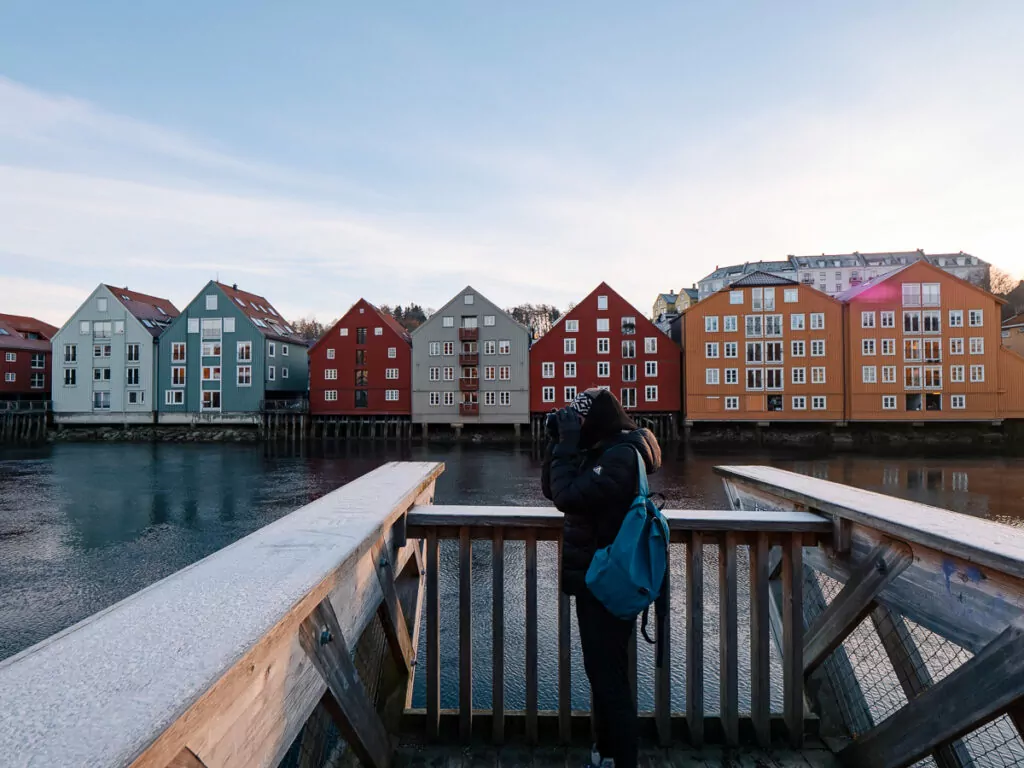
Sustainable cruising with Havila Voyages
While multinational cruise corporations treat Norway’s fjords as pretty profit centres, Havila is a homegrown, family-run company that puts protecting their unspoilt coastline and serving local communities above all else.
Havila’s vessels are some of the most eco-friendly cruise ships in the world right now, they have the largest battery packs ever installed on passenger ships which lets them sail silently for four hours with zero emissions. And that’s not all, they’re on track to meet their goal of being entirely emission-free by 2030!
This is revolutionary, and it literally puts them decades ahead of the cruise giants who greenwash with empty promises of being ‘carbon neutral by 2050’. Too little, too late 💁🏼♀️
We are incredibly privileged as travellers to have front row seats to such magical places, the least we can do is to use our tourism dollars to support businesses that are working to preserve these destinations for generations to come.
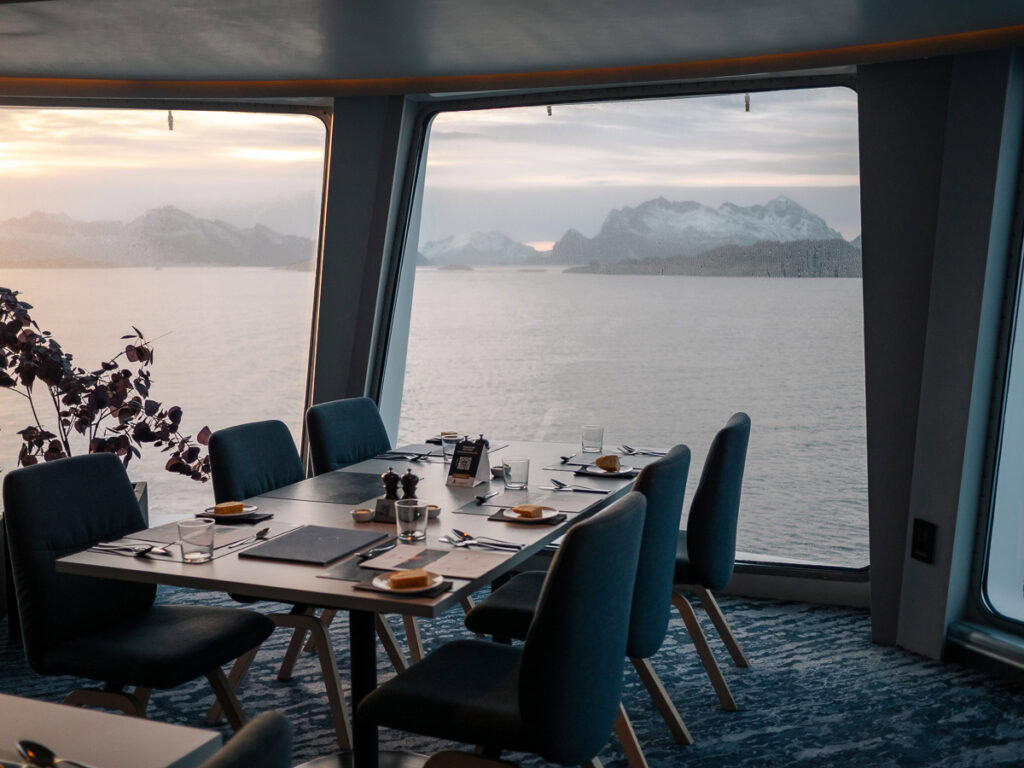
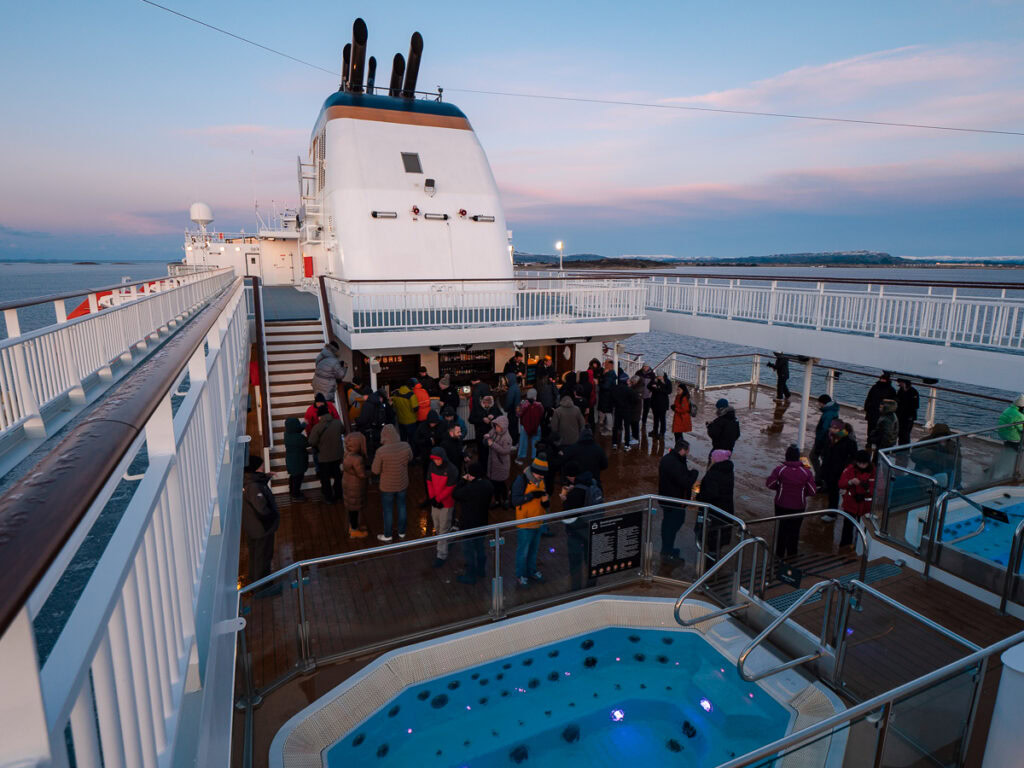
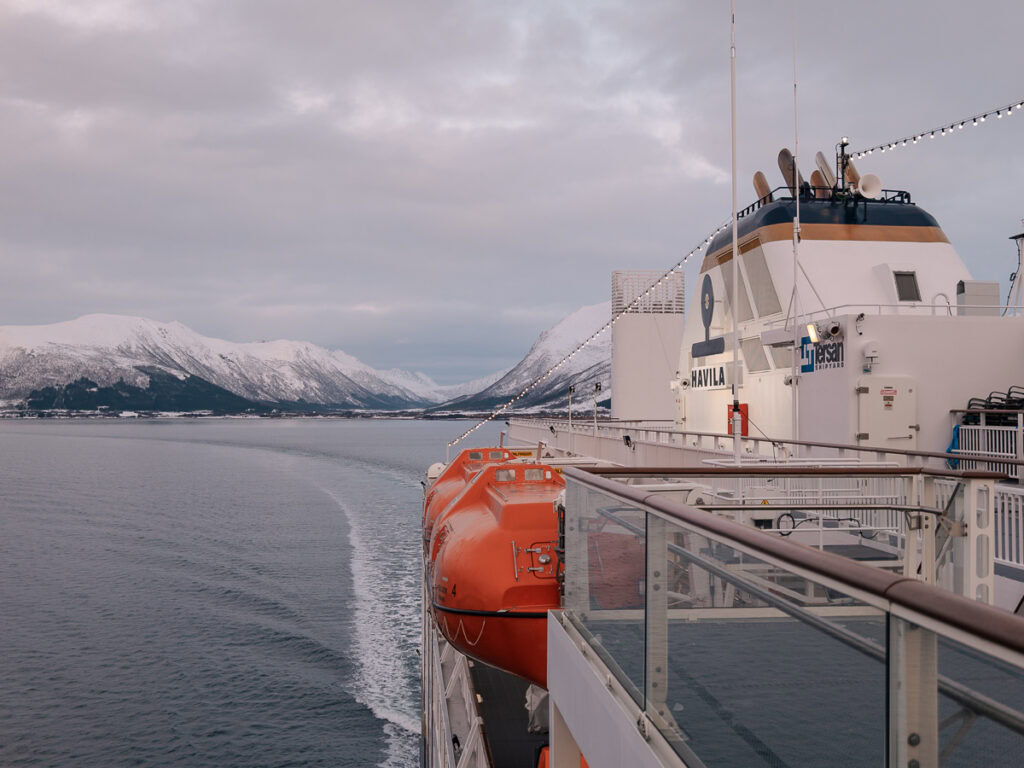
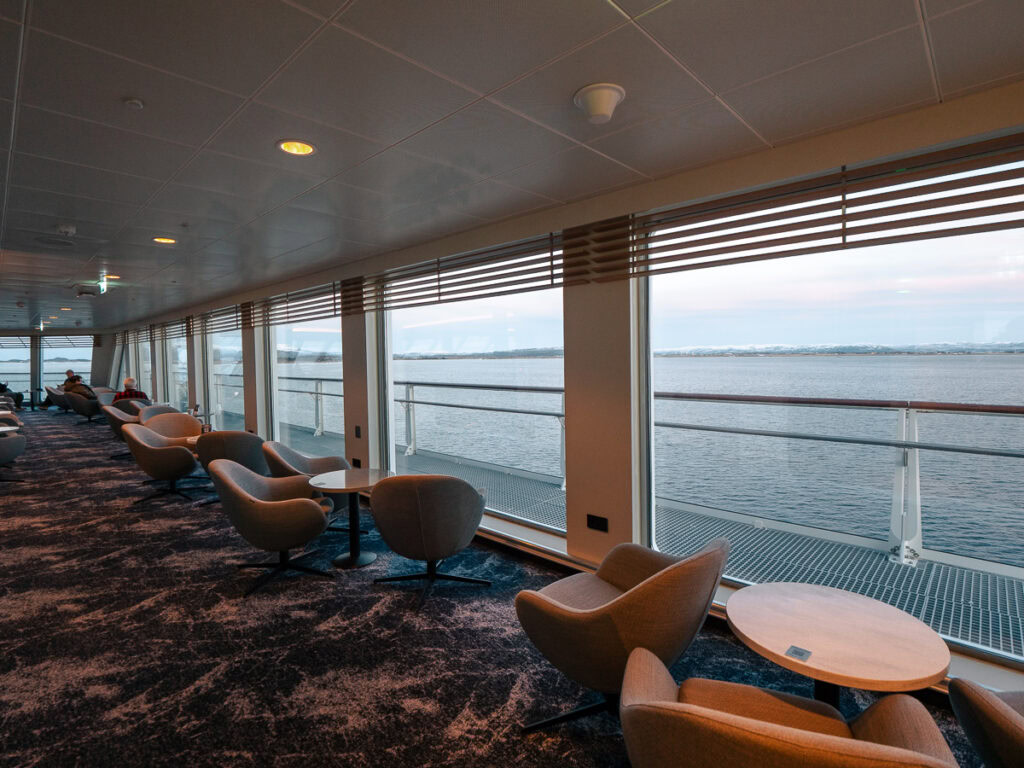
Havila or Hurtigruten?
I sailed the Norwegian Coastal Express with Havila Voyages, but Hurtigruten is another Norwegian company who service the exact same route on alternate days. I loved my trip with Havila (you can see my full Havila review for more info), I haven’t travelled with Hurtigruten so I can’t personally recommend them, but if you have set travel dates then you might just have to go with whoever has a boat running when you need it.
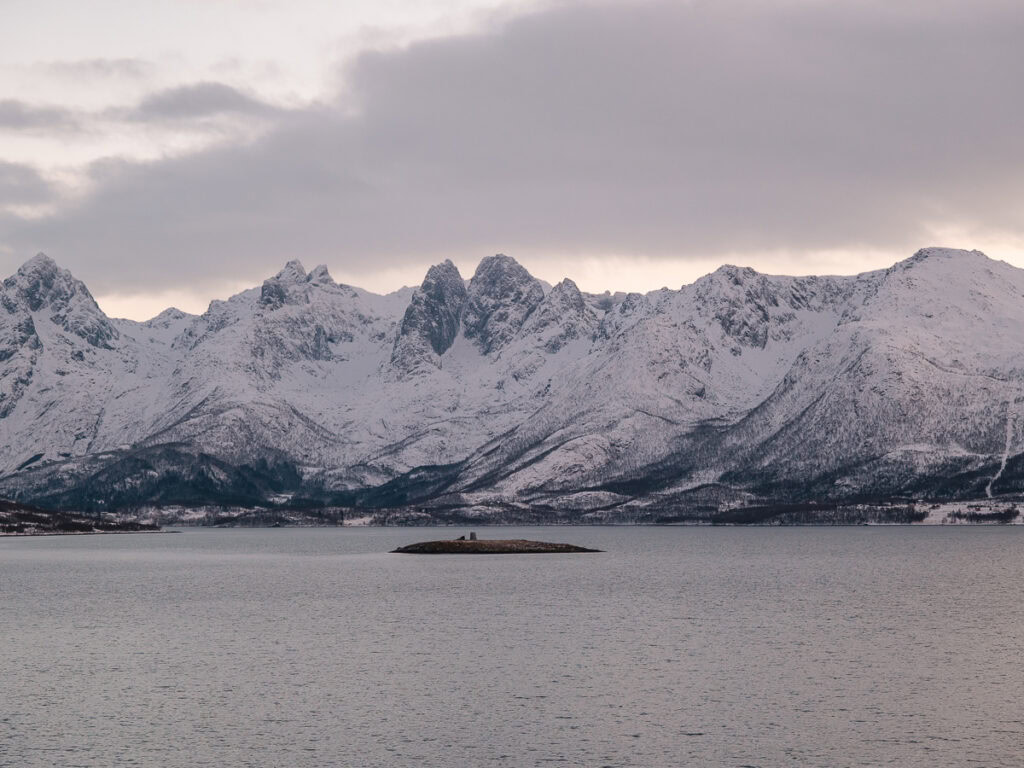
Option 2: Coastal route + Lofoten Islands road trip (iconic)
Itinerary overview
- Oslo-Flam-Bergen over 1-3 days
- Book a port-to-port trip on the coastal route with Havila or Hurtigruten from Bergen to Svolvær (3 nights onboard)
- See Geirangerfjord, Trondheim and Bodø along the cruise
- Disembark in Svolvær late on day four of the cruise (scheduled arrival is 9.20pm)
- Pick up a rental car the following morning for your road trip for however much time you have left
- If the coastal cruise is out of your budget, you could do the Nutshell route in the other direction from Bergen to Flåm to Oslo, then train Oslo to Trondheim (6.5h), train Trondheim to Bodo (10h), then catch the express ferry to Svolvær (3h 15m)
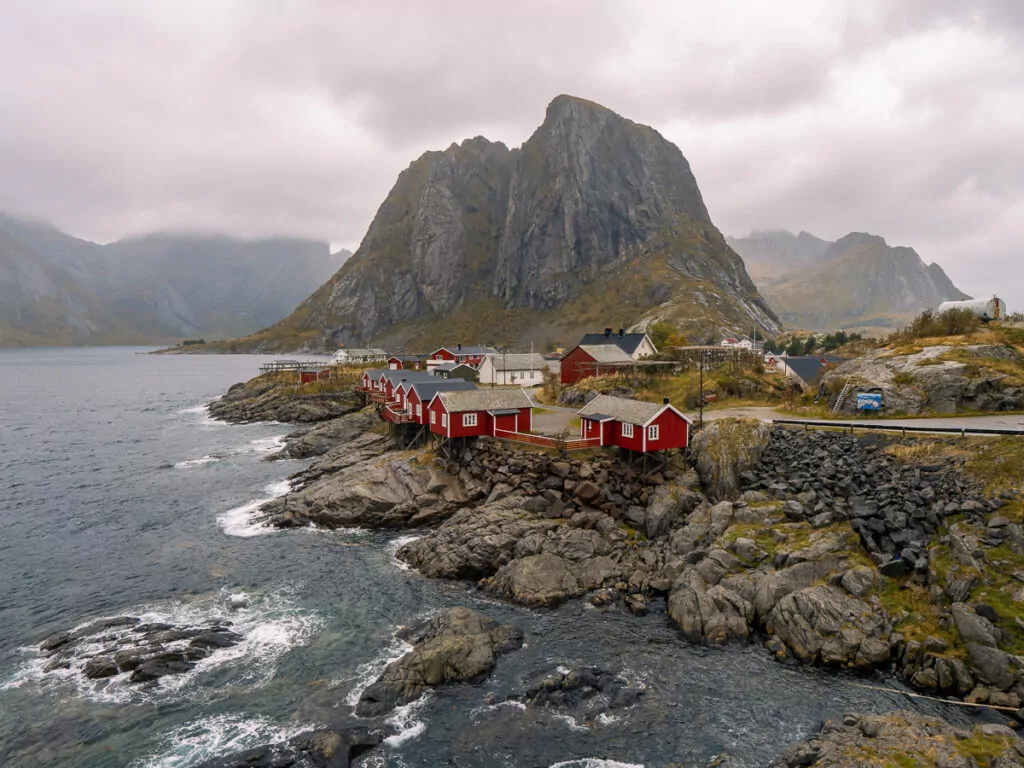
Best time of the year
- The shoulder seasons of spring and autumn are the best times to visit the Lofoten Islands for a road trip, there’ll be fewer cars on the road and lower prices. Late spring and early autumn are your best bet for hikes but you need to check trail conditions before setting off.
- Summer is hectic here, the roads are dangerously busy, the tiny villages get overrun with tourists, hiking trails are packed. Every local I spoke to made it clear they do not want any more visitors in July and August in particular. If you’re travelling during these months I’d really recommend choosing option three (Vesterålen road trip) instead.
- Winter is beyond beautiful but daylight is limited and driving conditions can be tricky if you’re not used to snow and ice
- October, February and March are the best months for aurora-spotting according to the locals I talked to
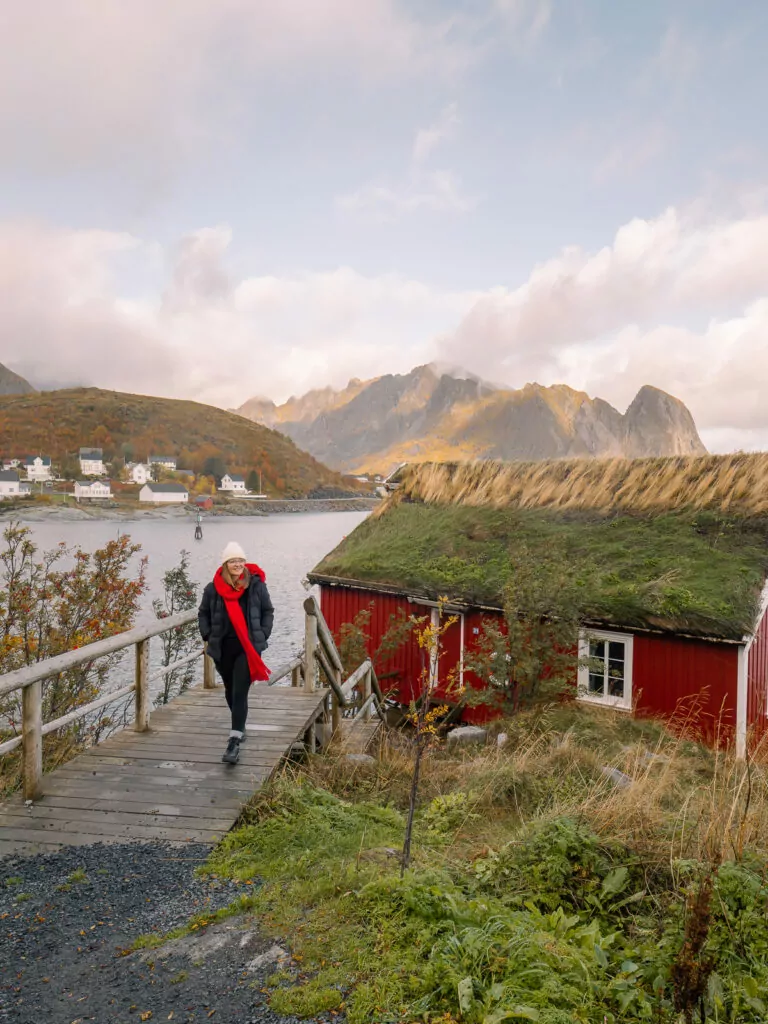
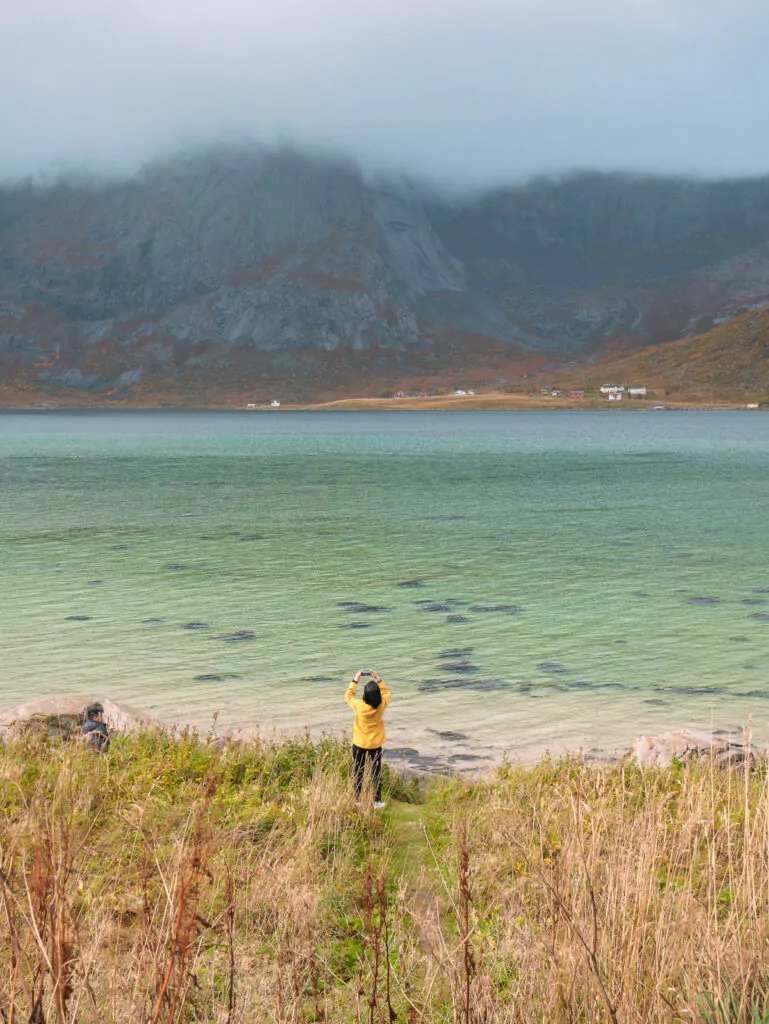
About the Lofoten Islands
I often talk about the idea of ‘soul cities’, those places where you immediately feel at home as soon as you arrive and that feel like they’ve been waiting for you. I know the Lofoten Islands aren’t a city, but ‘soul archipelago’ just doesn’t have the same ring to it 🙃
This remote slice of paradise was at the top of my bucket list for yeeeears before I made it here for an autumn adventure during a three week no-fly Scandinavia trip, and they absolutely lived up to the hype.
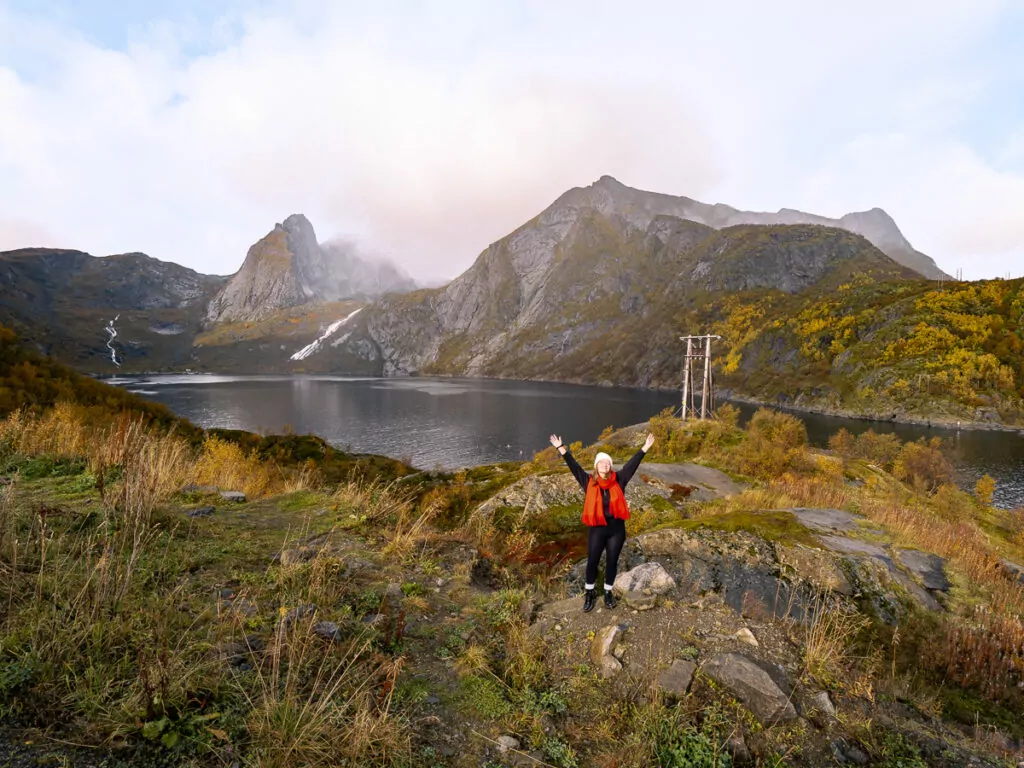
The scale of the scenery here is out of this world. Scraggy mountains tower over grass-roofed fishermen’s huts, the Arctic beaches are suspiciously inviting with turquoise water lapping at the white sand, and there are countless hiking trails to take you up to maybe some of the best viewpoints on the planet.
Originally I’d hoped to get around by bus, but I quickly learnt that Lofoten’s public transport infrastructure is very limited, so I ended up admitting defeat and renting a car for my last few days. Learn from my mistake!
If you’re really not keen on driving then I’d recommend booking tours with the local legends at Lofoten Lights, they have a two day Lofoten highlights photo tour, a one day South Lofoten tour or one day North Lofoten tour, a Midnight Sun photo tour or a private full day tour which covers loads of ground.


Things to do in the Lofoten Islands
- Hit the hiking trails if you’re there in the right season, Reinebringen is the most well known but there’s also Nonstinden, Kvlavika Beach and Djevelporten. Check trail conditions before you go, be prepared for weather changes, and know your personal limit. Lofoten has limited search and rescue services + low hospital capacity.
- Sunbathe (or maybe not) at the beautiful beaches of Haukland, Uttakleiv and Ramberg
- Cruise through Trollfjord, the narrowest fjord in the country
- Grab a cinnamon roll from the world-renowned bakery in Å (yes, that’s the name of the village!)
- Kayak under the midnight sun or get kitted out in serious gear for a winter kayak tour
- Spot sea eagles on a wildlife safari by RIB
- Take cold plunging to the next level with an Arctic surf lesson at Unstad
- Chase the Northern Lights with a professional photographer to snap epic shots for you
- Admire the charming fishing villages of Hamnøy, Henningsvær and Nusfjord (my personal favourite, off the typical tourist route)
- Experience Lofoten by horseback with a guided ride along Arctic beaches
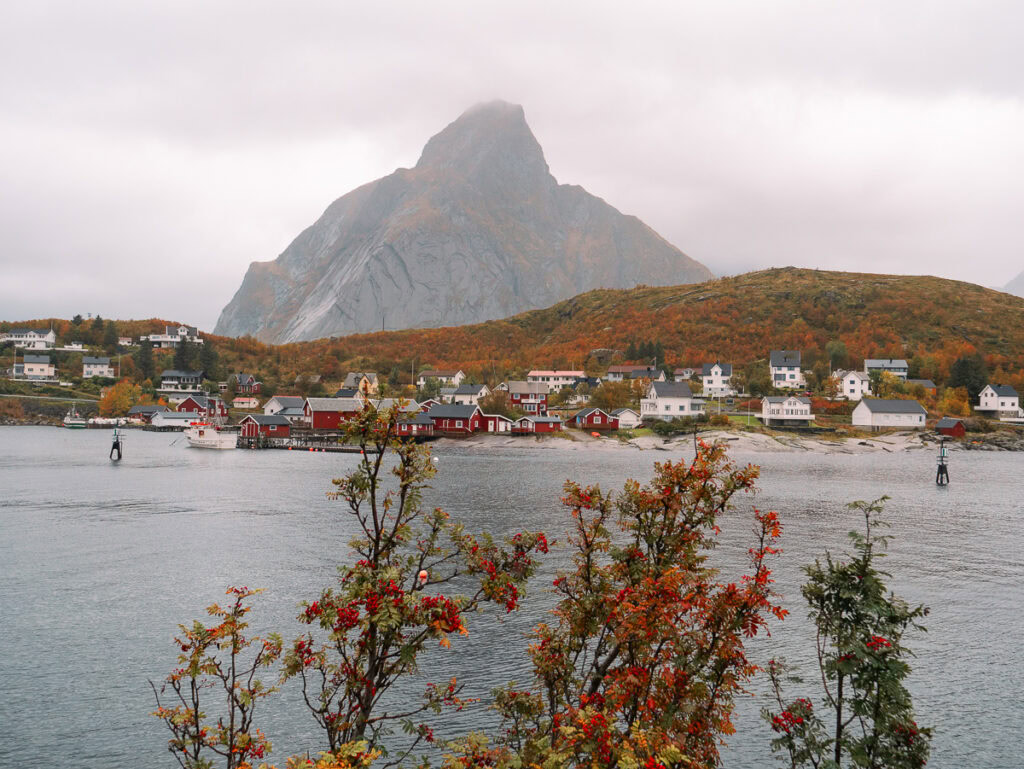
Where to stay in the Lofoten Islands
Budget:
- FURU Hostel (top hostel in Lofoten, cosy and social)
- Kræmmervika Rorbuer (quirky cabin dorms and apartments)
- Lofoten Å HI hostel (waterfront hostel right at the end of the E10, basic but well-rated)
Mid-range:
- Lofoten Rorbuer in Svolvær (my go-to in Svolvær, top-rated family-owned traditional ‘rorbu’ with a guest kitchen, terrace with BBQ, amazing views and a Norwegian Forest cat called Bean)
- Thon Hotel Lofoten (popular hotel right by the Svolvær ferry terminal where the Havila/Hurtigruten arrive, best option for your first night before you get your rental car the next day)
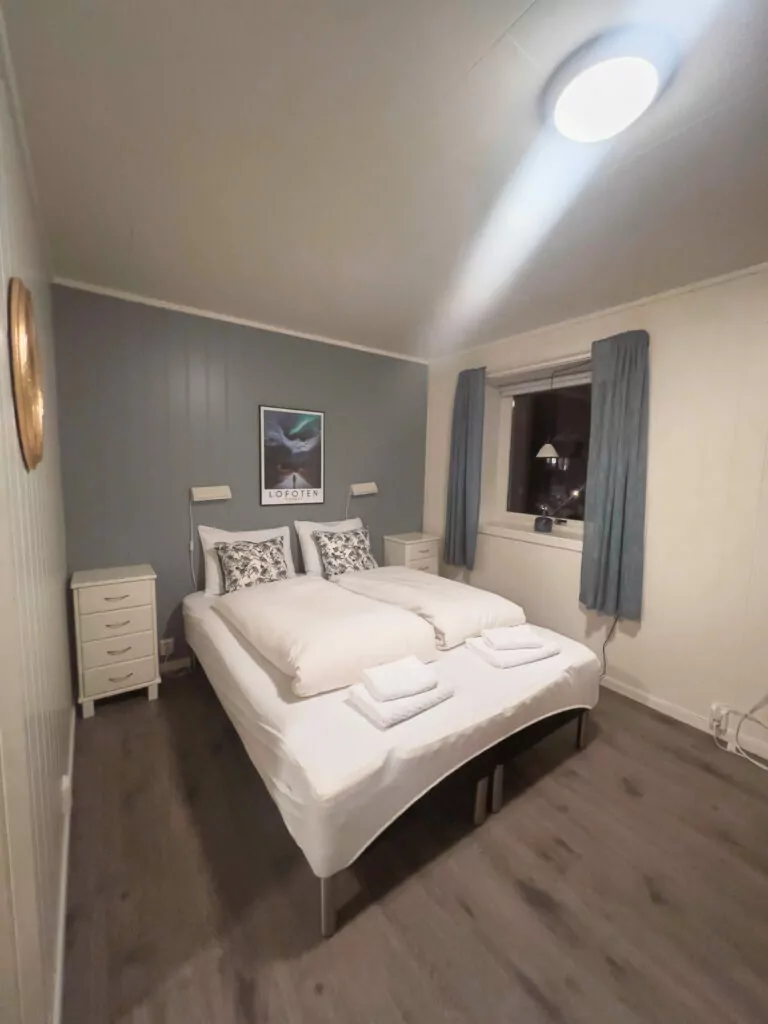


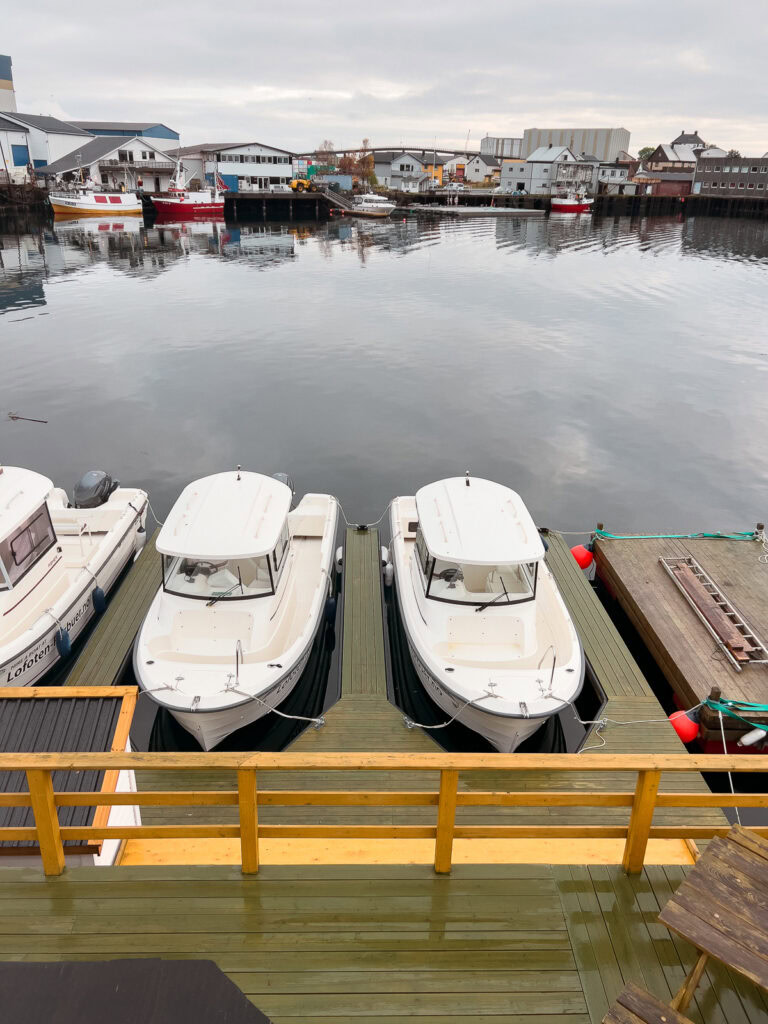
Luxury:
- Lofoten Glamping Dome (the ultimate glamping experience, with panoramic views from your bed, comfy furnishings, a mini kitchen and a fireplace)
- Lofoten Suiteapartments (stylish apartments on the waterfront, also right by the ship terminal)
- Unstad Arctic Resort (beautiful apartments at the Unstad surf school, with a shared hot tub and sauna to warm up after braving the water)
How to leave Norway after the Lofoten Islands
- Fly from Svolvær to Oslo or Tromsø to depart Norway
- If you’re avoiding flying and need to get back to Oslo, you could express ferry Svolvær to Bodo (3h 15m), train Bodo to Trondheim (10h), spend a night in Trondheim, then train Trondheim to Oslo the following day (6.5h)
- And if you want to connect overland with Sweden, from Svolvær you can take the bus to Narvik (4h-ish), then an epic 19 hour night train takes you all the way to Stockholm!
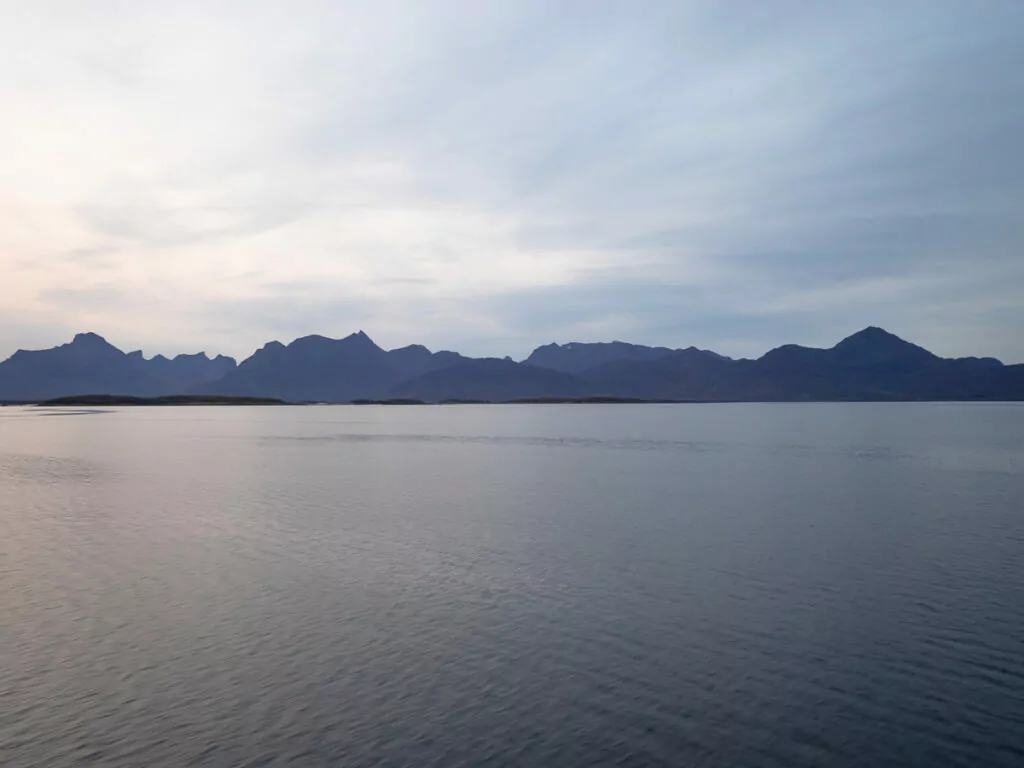
Option 3: Coastal route + Vesterålen road trip (off the beaten track)
Itinerary overview
- Oslo-Flam-Bergen over 1-3 days
- Book a port-to-port trip on the coastal route with Havila or Hurtigruten from Bergen to Sortland (3.5 nights haha) or Harstad (4 nights)
- See Geirangerfjord, Trondheim and Bodø along the cruise
- If you’re travelling from mid-March to mid-September you’ll also get to enjoy the Lofoten Island scenery on the evening of day 4, outside of these months it’s too dark during this portion of the route
- Disembarkation options are Stokmarknes at 1.30am, Sortland (Vesterålen’s main town) at 2.55am, or for a more comfortable departure time you could spend another night on the boat and wait until Harstad at 7.10am the next morning on day 5 of the cruise
- Pick up a rental car from Stokmarknes, Sortland or Harstad to explore Vesterålen at your own pace for the remainder of your trip
- If the coastal cruise is out of your budget, you could go Bergen-Flam-Oslo, train to Trondheim (6.5h), train to Valnesfjord (9h), then bus to Sortland (6h)
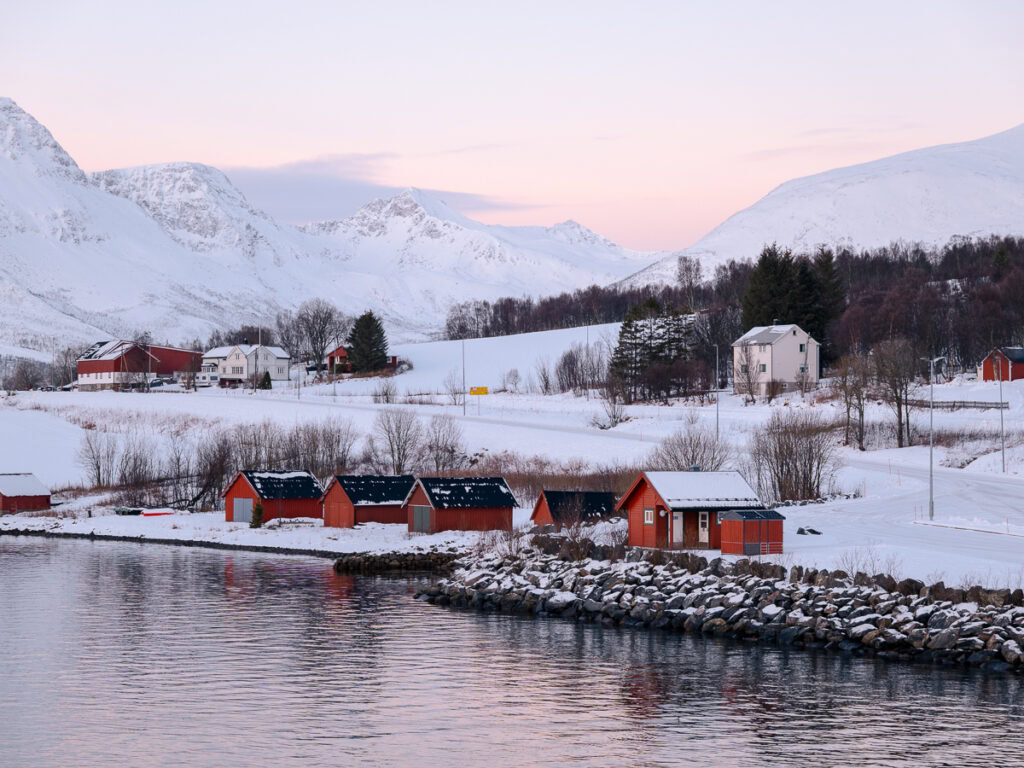
Best time of the year
- Vesterålen is perfect if you’re heading to Norway in summer, it’s still fairly under the radar for international tourists and it’s nowhere near as busy as the Lofoten Islands! You can hike one of the 200+ trails, discover historic fishing villages, cool off with an Arctic dip and witness midnight sun from late May to late July.
- The shoulder seasons are quiet but still offer wildlife spotting, lots of outdoor adventures and Sami cultural experiences, with the Northern Lights showing up as early as late August until late March/early April.
- In winter, Vesterålen transforms into an ice palace with beautifully soft lighting during the ‘day’ and lots of dark hours for aurora spotting, but you’d only want to rent a car at this time if you’ve got winter driving experience and don’t mind short days.
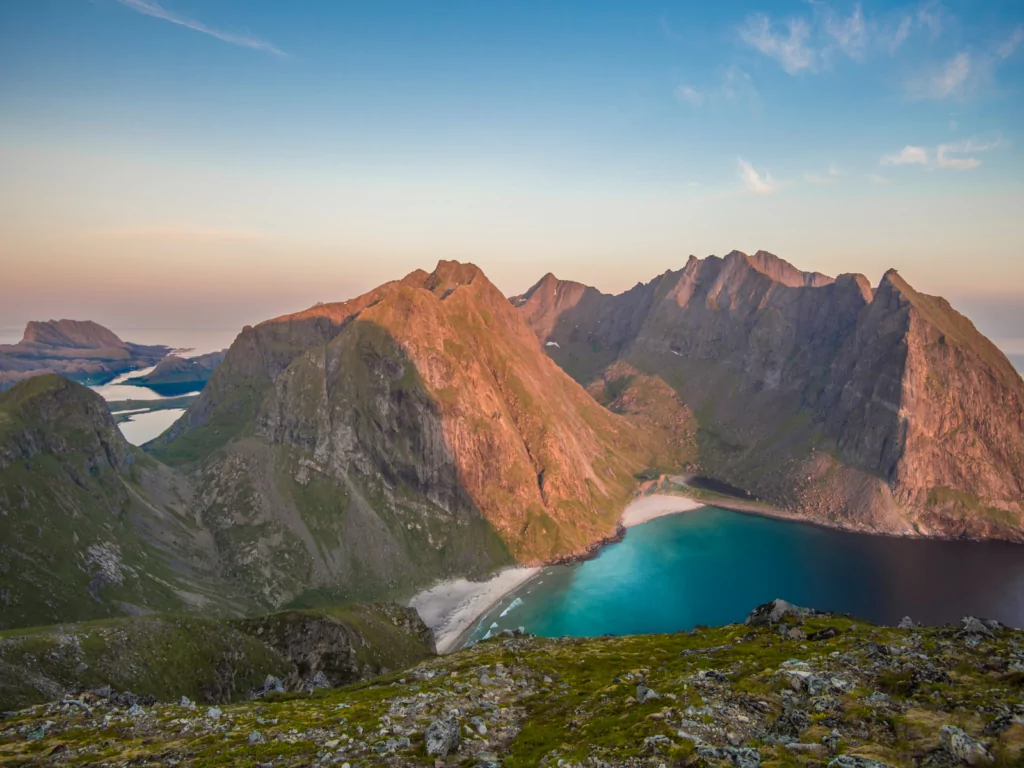
About Vesterålen
Vesterålen is Lofoten’s quieter neighbour, a chain of 1300+ islands with outdoor adventures galore, but without the tourist crowds that descend on the roads, trails and beaches next door.
The scenery is pure magic, with colourful waterfront rorbuer on stilts overlooking impossibly clear estuaries, huge mountains with practically vertical cliff-faces towering over port towns, and year-round whale-watching (one of the best places in the world for it) plus the chance to spot sea eagles, moose, puffins, seals and more.

I’d never heard of Vesterålen until it came up as an excursion option on my Havila cruise, which I signed up to, and while exploring the region by bus I immediately started planning my return. I’m hoping to tick that off the list on my next Europe trip!
It’s a popular destination for domestic visitors as well as keen bird-watchers, wildlife photographers and cyclists, so don’t expect it to be completely devoid of tourists, but if you’re looking for an authentic Norwegian experience that’s in the early days of its tourism era then this is where you want to go.
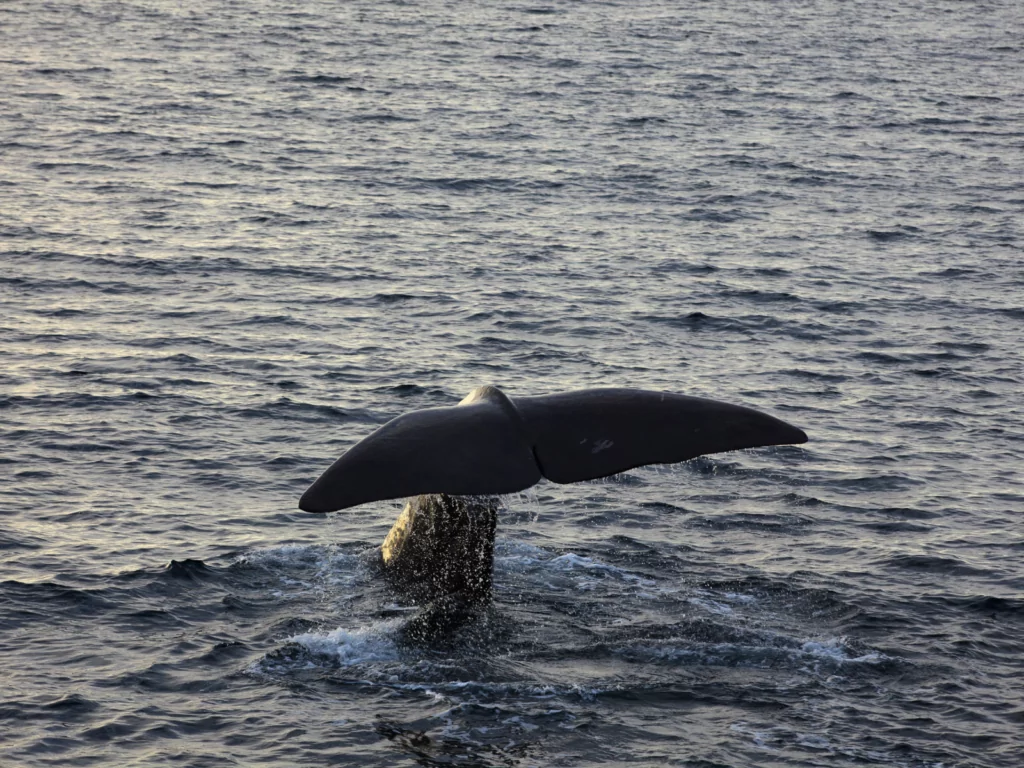
Things to do in Vesterålen
- Join a whale-watching safari, this is one of the best locations in the world for all-year whale spotting
- Visit the medieval Trondenes Church and the Trondenes Historical Center next to it to learn about the Middle Ages in Northern Norway
- Explore Nyksund, an abandoned fishing village that’s been revitalised and restored by creatives and entrepreneurs
- Kayak or boat through the iconic Trollfjorden
- Take a boat tour out to Bleiksøya to see the cutest birds ever, puffins!
- Choose from 200+ hiking trails, the best-known one is probably Dronningruta (15km, 5-8 hours) but there are loads of options from easy, accessible walks to challenging routes that require proper gear. Check AllTrails for all the info.
- Dance under the midnight sun in summer
- And marvel at the Northern Lights in winter (best to book a tour so you can sit back and enjoy the show rather than tackle winter roads at night and try to figure out the aurora forecast!)
- Immerse yourself into Sami life and taste local cuisine with an authentic cultural tour
- Jump on a deep sea fishing trip and try your hand at catching a huge cod
- Snorkel the clear Arctic waters in search of marine life
- Visit the Hurtigruten Museum in Stokmarknes
- Learn about space travel, aurora research and even take a virtual trip to Mars at Andøya Space, Norway’s only operational space centre
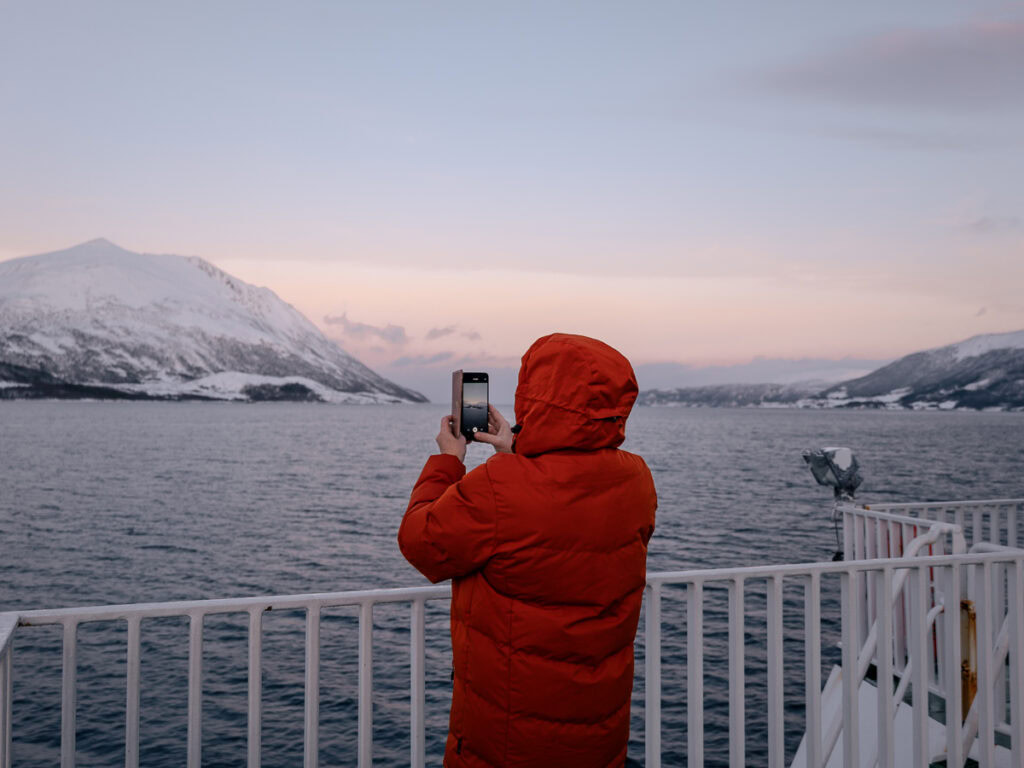
Where to stay in Vesterålen
Budget:
- Oppmyre Camping, Myre (basic but well-rated single, bunk and family rooms on the water)
- Fjordcamp, Kråkberget (super cute camping huts with access to shared facilities)
- Nyksund Ekspedisjonen (cosy guesthouse in the quirky village of Nyksund)
Mid-range:
- Quality Hotel Richard With, Stokmarknes (Vesterålen’s largest hotel, 4* with fantastic reviews)
- Scandic Sortland (comfortable, top-rated 4* right by the ferry terminal in Sortland)
- Thon Hotel Harstad (another much-loved 4* hotel, 200m from the ferry terminal in Harstad)
Luxury:
- Risøyhamn Sjøhus AS (modern, stylish apartments right on the water in Risøyhamn)
- WonderInn Arctic, Utstrand (one for the bucket list, a glass pod with unbeatable views and an outdoor hot tub)
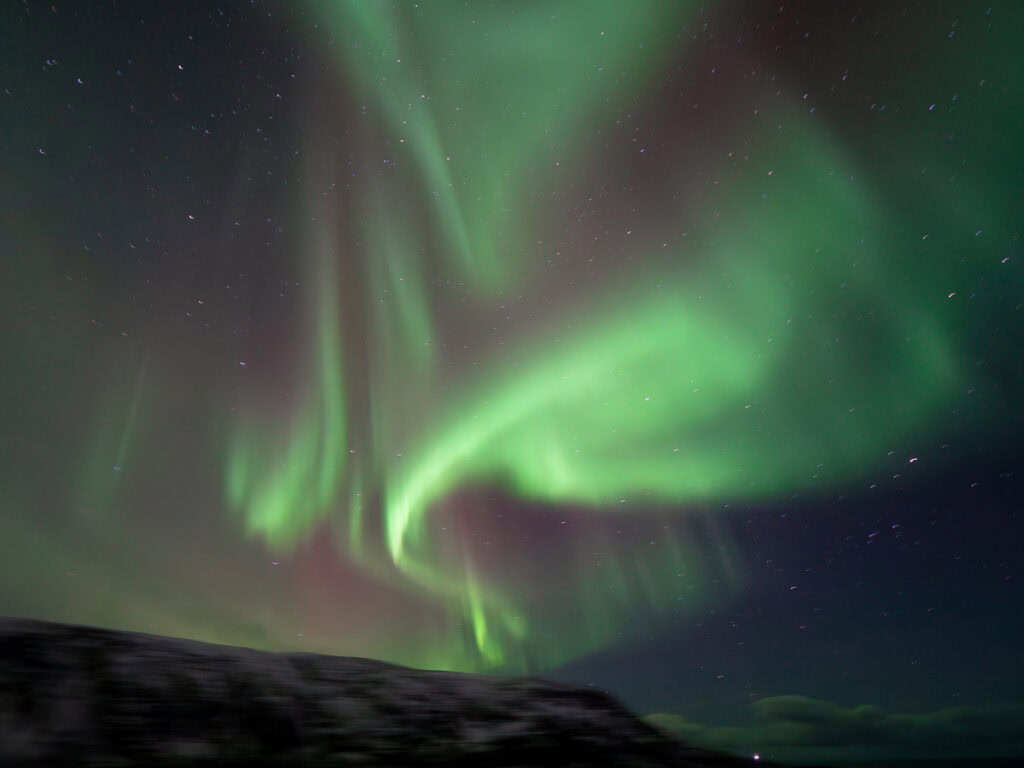
How to leave Norway after Vesterålen
- Drop your car off at Harstad/Narvik Airport (EVE) and fly to Oslo to fly home
- If you’re trying to avoid flying and need to get back to Oslo, it’s a bit of a long journey but it’s doable. Catch a bus from Sortland to Valnesfjord (6h), then train to Trondheim (9h) and train to Oslo (6.5h)
- Or to continue your Scandinavia adventures in Sweden you can catch a local bus from Sortland or Harstad to Narvik, then catch the 19h night train to Stockholm (with various Sweden stops en route)
Option 4: Coastal route + Tromsø (Arctic)
Itinerary overview
- Oslo-Flam-Bergen over 1-3 days
- Book a port-to-port trip on the coastal route with Havila or Hurtigruten from Bergen to Tromsø (4 nights)
- See Geirangerfjord, Trondheim and Bodø along the cruise
- From mid-March to mid-September you’ll be able to see the dramatic Lofoten Islands landscapes on the evening of day 4, and from late April to mid-August you can enjoy epic Vesterålen views if you wake up early on day 5
- Disembark in Tromsø at 2.15pm on day 5
- You could choose to rent a car in Tromsø if you wish, but the city is very walkable and any tours you book will have a central office or offer a pick up service, so it’s not necessary
- If the coastal cruise is out of your budget then it would be best to book a domestic flight from Oslo or Bergen to Tromsø, because the overland journey is a pretty arduous journey and it would cut into your itinerary too much

Best time of the year
- The polar night is from late November to mid-January, when the skies go from dawn straight to dusk and the sun never rises above the horizon. Sky colours are beautiful for the limited light hours, but it can get bitterly cold so pack appropriately.
- The Northern Lights are visible from September to mid-April, it’s best to book an aurora tour because the guides know exactly where to go based on the weather forecast and sometimes they’ll drive a couple of hours out of Tromsø for the best show
- You can visit Tromsø outside of winter too, but be aware that some of the iconic Arctic activities like whale watching, husky sledding, snowmobiling etc. won’t be available in the warmer months
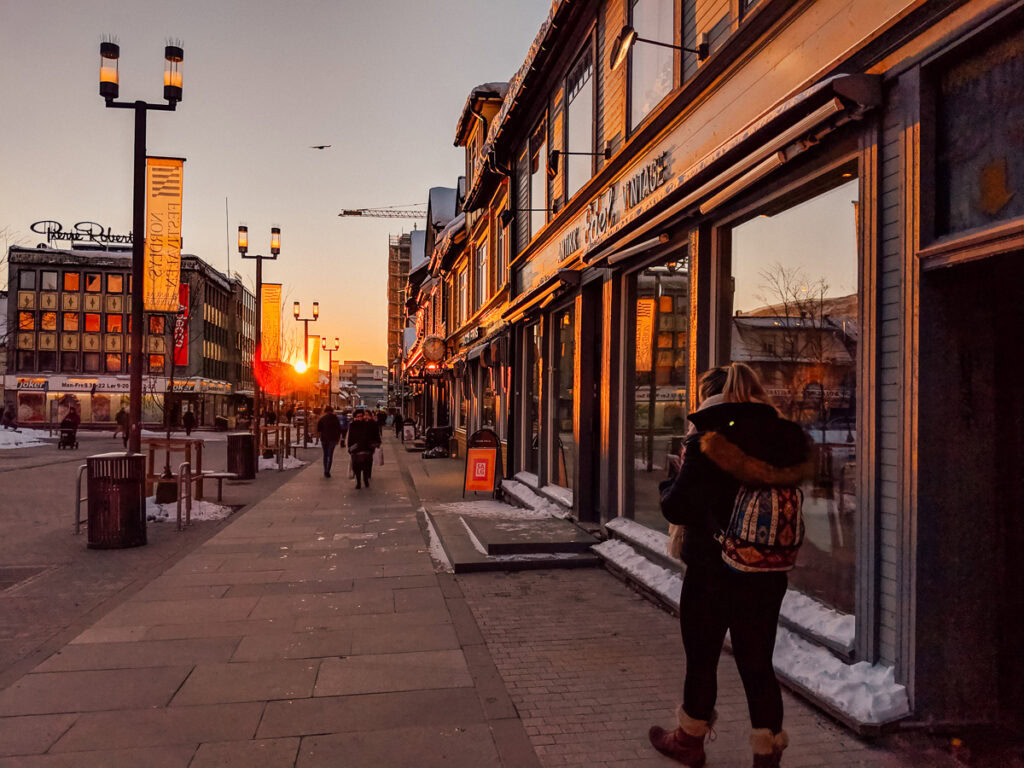
About Tromsø
If you’re dreaming of the ultimate Arctic Circle experience on land but aren’t keen to navigate icy roads yourself, this itinerary is perfect.
Tromsø is the gateway to the Arctic, with polar adventures like snowmobiling, husky sledding, Northern Lights chasing, fjord exploring and sea safari-ing on its doorstep. It’s a go-to winter weekend destination for travellers all over Europe, thanks to direct (and often very cheap) flights from London, Paris, Milan, Amsterdam and more.
But despite the extremes of weather and daylight (harsh, cold winters where the sun doesn’t rise, and milder summers where the sun never sets), this city is surprisingly sophisticated and cosmopolitan. It even hosts a multitude of ‘northernmost’ things, including the northernmost McDonalds, Burger King, university, stand-up comedy club, escape room, Cross Fit centre, golf course, 7-Eleven, skate shop and traffic light!

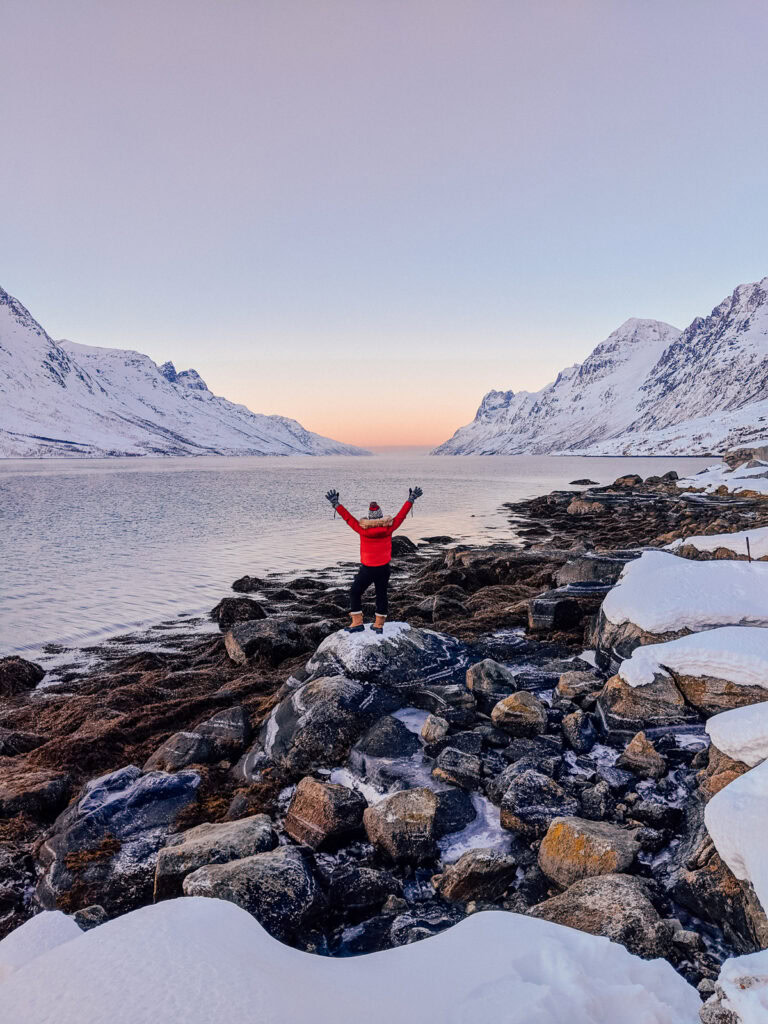
Tromsø’s university is one of the key reasons the city thrives, the Arctic University of Norway (coolest uni name ever) welcomes a revolving community of young Norwegians and international students who keep the town alive even during the darkness of winter, with buzzing nightlife, craft breweries, casual eateries and quirky retail stores.
And beyond that, there’s easy access to northern Norway’s pristine wilderness with loads of tourism operators running tours and experiences all year long.

Things to do in Tromsø
- Chase the Northern Lights, I highly recommend the legends at Chasing Lights, who gave me my first ever aurora experience! They have a cheaper big bus experience or a smaller group, more intimate but more expensive mini bus experience (which is what I did).
- Ride the Fjellheisen cable car for panoramic views of the city and mountains
- Discover the Arctic fjords by boat, kayak, guided road trip tour, or self-drive if you have a rental car
- Experience traditional dog-sledding at an ethical husky kennel, or if it’s out of season for sledding you can take the huskies hiking and meet puppies instead!
- Visit three countries in 30 seconds… with this snowmobile tour, which takes you to the three-country border marker in the middle of a frozen lake! This was the highlight of my time in Tromsø (apart from the Northern Lights of course)
- Catch a midnight concert at the iconic Arctic Cathedral
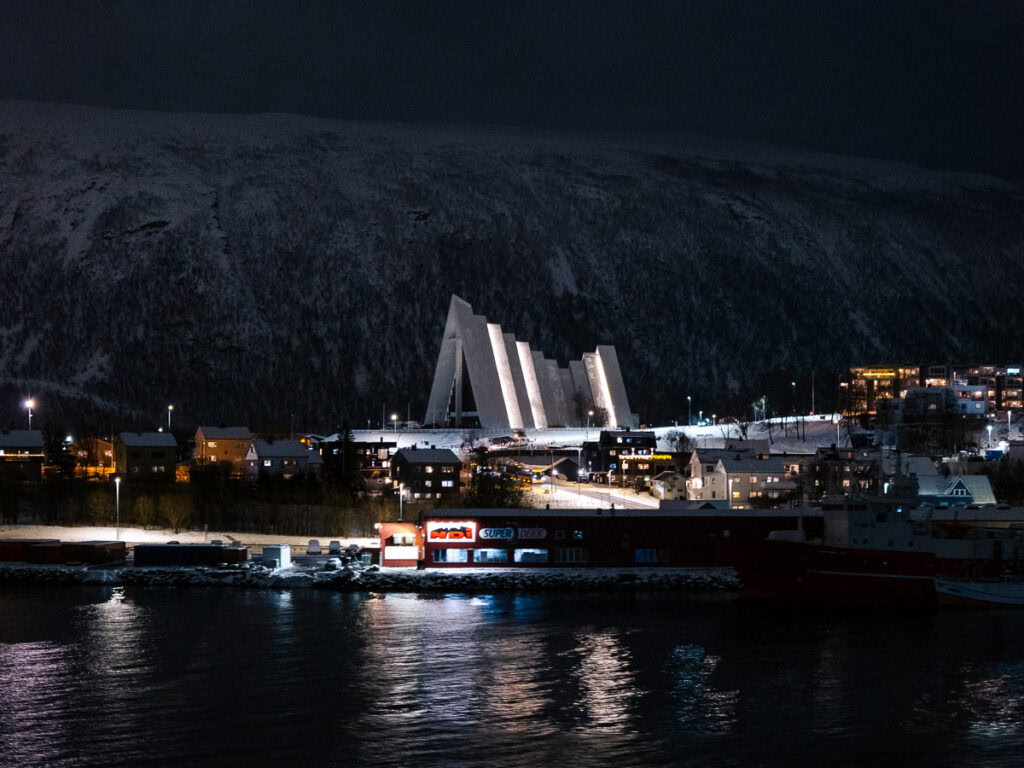
- Meet indigenous Sami people and learn about their culture on this cultural tour
- Float in the Arctic water in a survival suit (seriously, this is an actual bookable activity!)
- Taste local delicacies during this top-rated food walking tour
- Take a night cruise, there’s a midnight sun cruise in summer or you could do a Northern Lights cruise in winter (with a hot tub and dinner onboard!)
- Ride a Lyngen horse (Norway’s national breed) along the beach
Where to stay in Tromsø
Budget:
- Tromsø Lodge & Camping (super cute cabins within easy reach of the city but away from light pollution, we saw the Northern Lights from the drive way!)
- Tromsø Coco Apartments (affordable dorms and single rooms right in the city centre)
- Comfort Hotel Xpress Tromsø (basic 3* hotel with small but cheap rooms)

Mid-range:
- Loads of private apartments for the mid-budget travellers, some of the top-rated ones are this one and this one
- TotalApartments Vervet Hotel (serviced apartments at a fair price)
- Scandic Grand Tromsø (4* hotel with fantastic reviews a short walk from the ferry terminal)
Luxury:
- Aera Glass Cabins (remote cabins and glass houses for ultimate aurora-spotting conditions, you’d need a car to get here though)
- Arctic Seasons Panoramic Villa (luxe modern four-bedroom villa for groups)
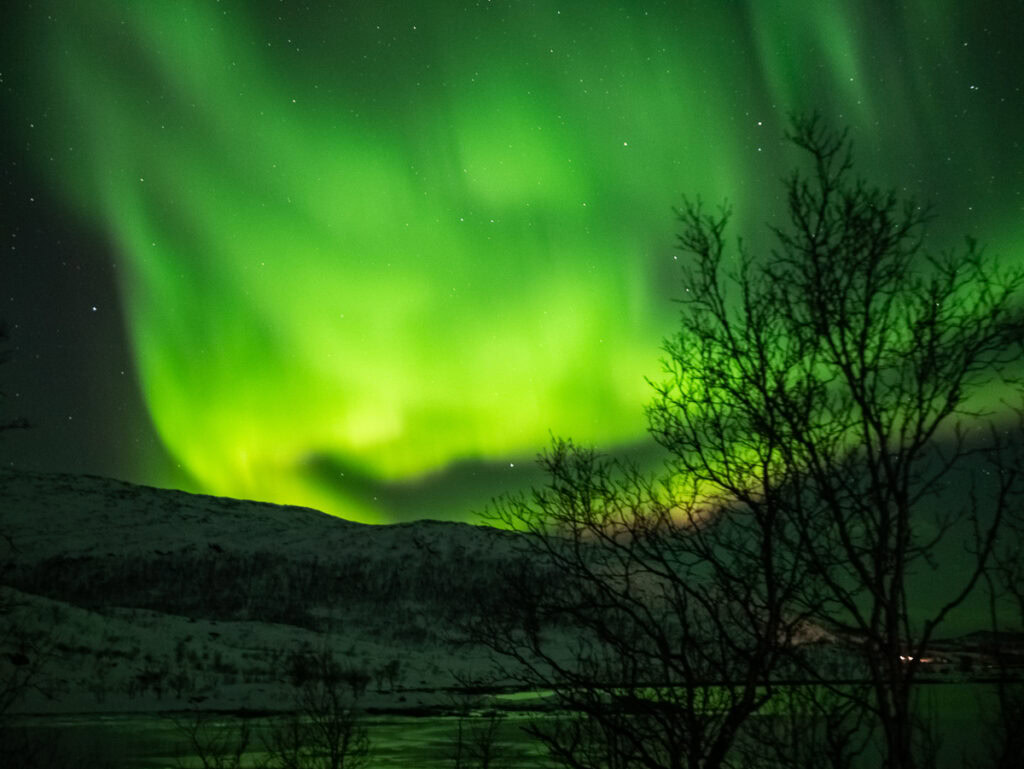
How to leave Norway after Tromsø
- From Tromsø there are direct flights to the UK and a bunch of major European travel hubs, for anywhere further afield you can fly to Oslo and connect to longer flights from there
- Tromsø to Oslo flight-free is very long-winded, bus from Tromsø to Narvik (3h 50m), overnight in Narvik because the buses don’t align well, the next morning bus to Valnesfjord (5h 15m), then train to Trondheim (9h) and night train to Oslo (7.5h)
- It would actually be quicker, easier and probably cheaper to reach Oslo going via Sweden! For this you could bus Tromsø to Narvik (3h 50m), catch the 19h night train to Stockholm, then it’s a 5h 40m train to Oslo
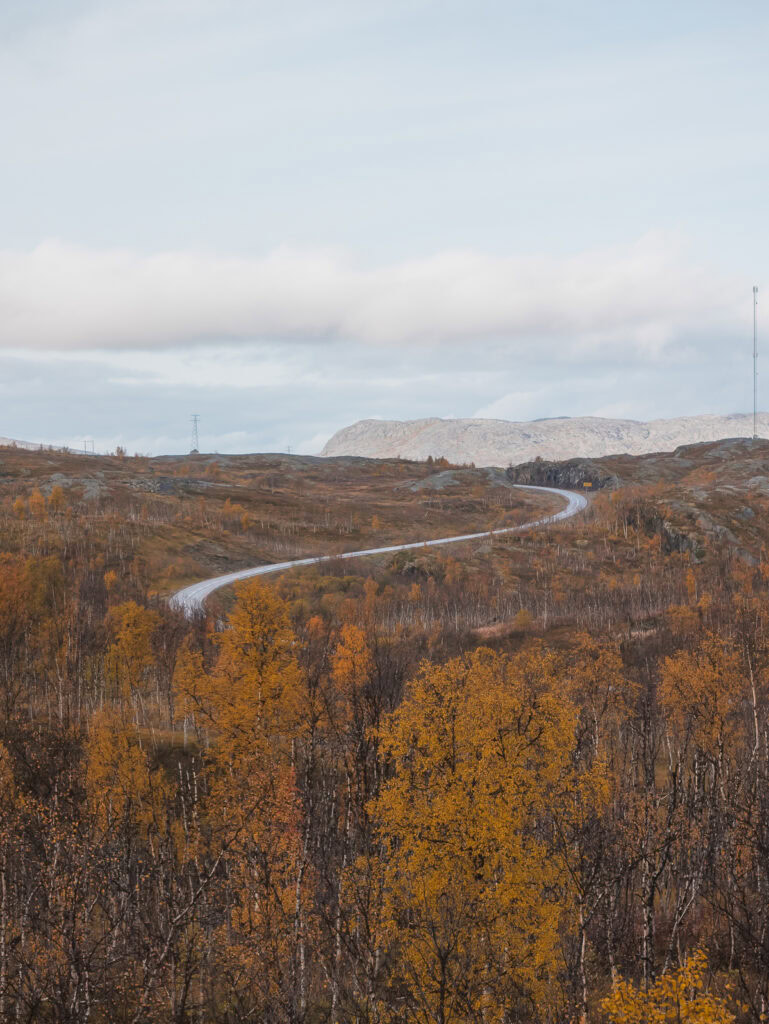
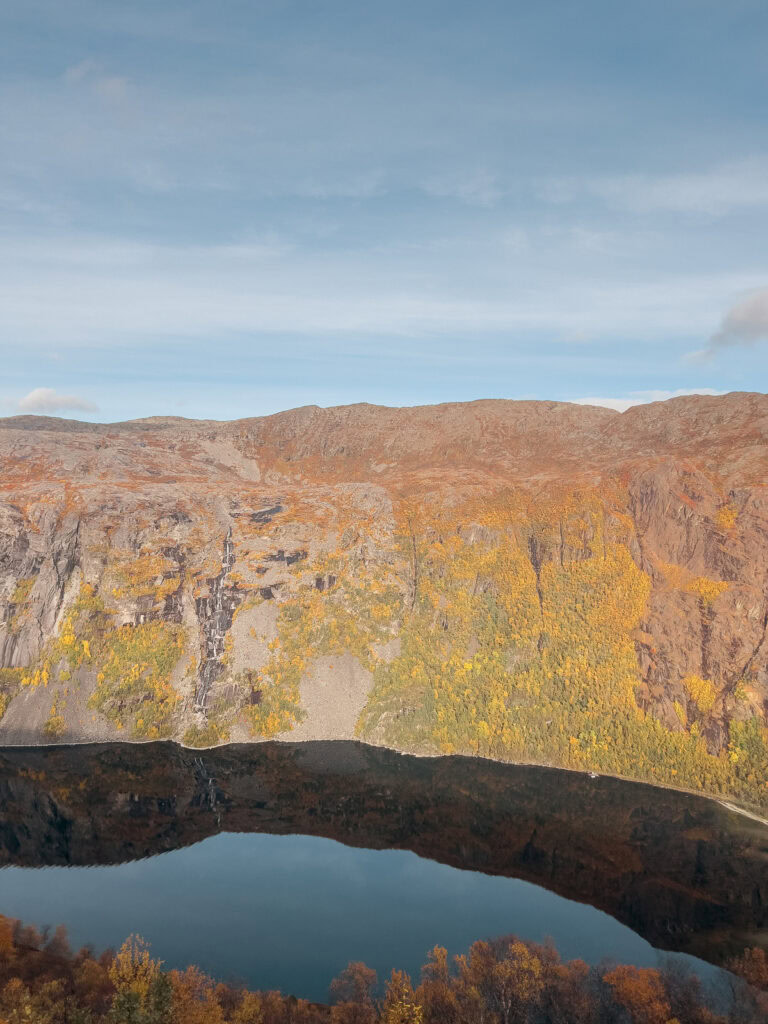
4 day, 1 week or 3 week Norway itineraries
How to spend four days in Norway
For a whirlwind four day Norway trip I’d highly recommend DIY-ing the Norway in a Nutshell route at the start of the two week itinerary, either Oslo-Flam-Bergen or fly in and out of Bergen and do a Bergen-Flam-Bergen loop.
You can find more info in my four day Norway itinerary.
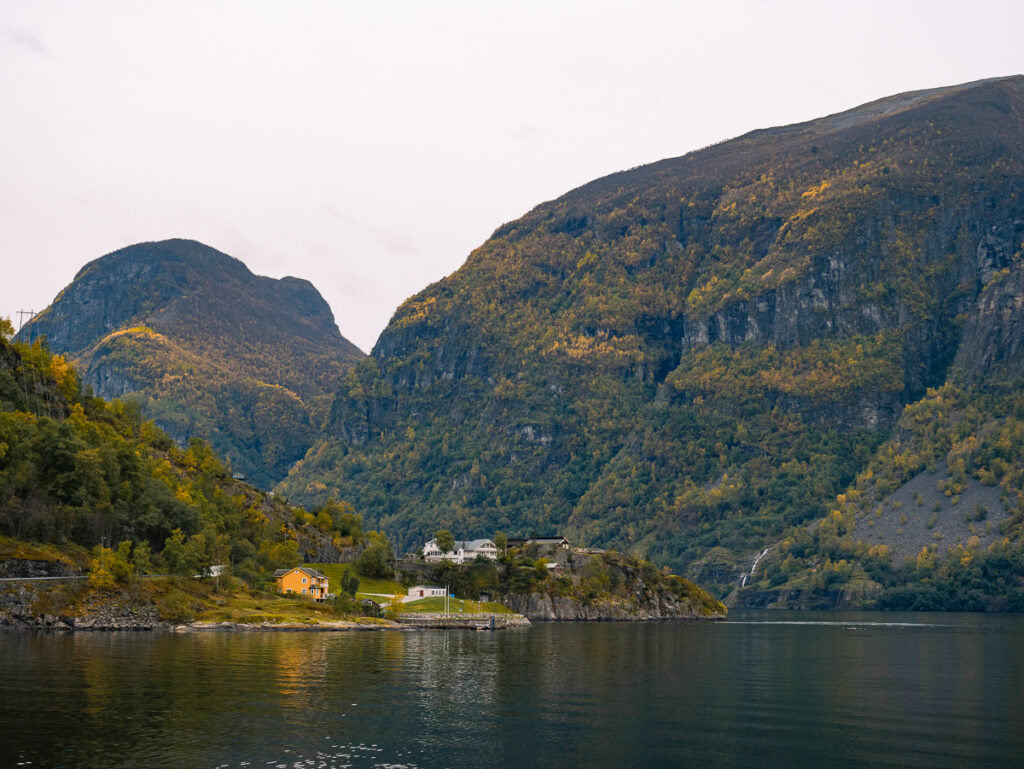
How to spend one week in Norway
With one week in Norway you’ve got a few options:
- Norway in a Nutshell route + extra time in Bergen and day trips to the fjords
- One way Norwegian Coastal Route voyage from Bergen to Kirkenes or vice versa
- Fly in and out of Svolvær (SVJ), Leknes (LKN) or Harstad/Narvik (EVE) and road trip the Lofoten Islands
- Fly in and out of Harstad/Narvik (EVE) and road trip Vesterålen
- Fly in and out of Tromsø (TOS) and explore the Arctic, though one week just in Tromsø is a long time so it would be best to get a rental car and explore beyond the city
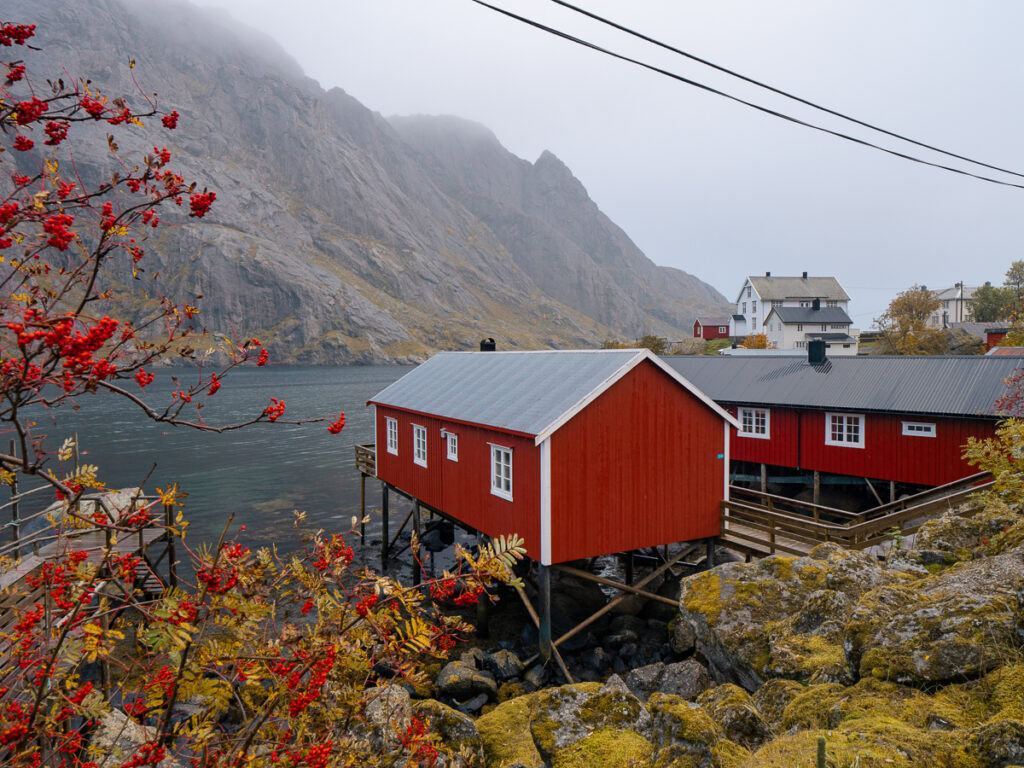
How to spend three weeks in Norway
If you’ve got time to extend your 14 day Norway itinerary, lucky you!
With an extra week you could:
- Combine options 2 and 3 for a Norway in a Nutshell + coastal cruise + Lofoten road trip + Vesterålen road trip, covering loooads of the country’s natural highlights
- Do Oslo-Flåm-Bergen, catch a coastal cruise from Bergen all the way up to Kirkenes, turn around and start the southern voyage, then get off in Vesterålen (morning day 9 of the voyage) to pick up a rental car for the rest of your time, or get off in Svolvær (evening day 9 of the voyage) for a Lofoten roadie
- Choose option 1 (Nutshell + full coastal voyage) but at a slower pace with more time in Oslo, Flåm and Bergen
- Connect your Norway adventure with other Scandinavian countries, check out my three week Scandinavia train itinerary for more info

Planning your two weeks in Norway
When is the best time to visit Norway?
☀️ Summer (June to August): Midnight sun, hiking season, music festivals and mild temperatures. Bergen and Flåm will be super busy, the Lofoten Islands will be overrun (please avoid here in summer if you can, the level of tourism in July/August isn’t sustainable), Vesterålen will be popular with domestic tourists but the trails will be quieter than better known/more easily accessible hiking regions.
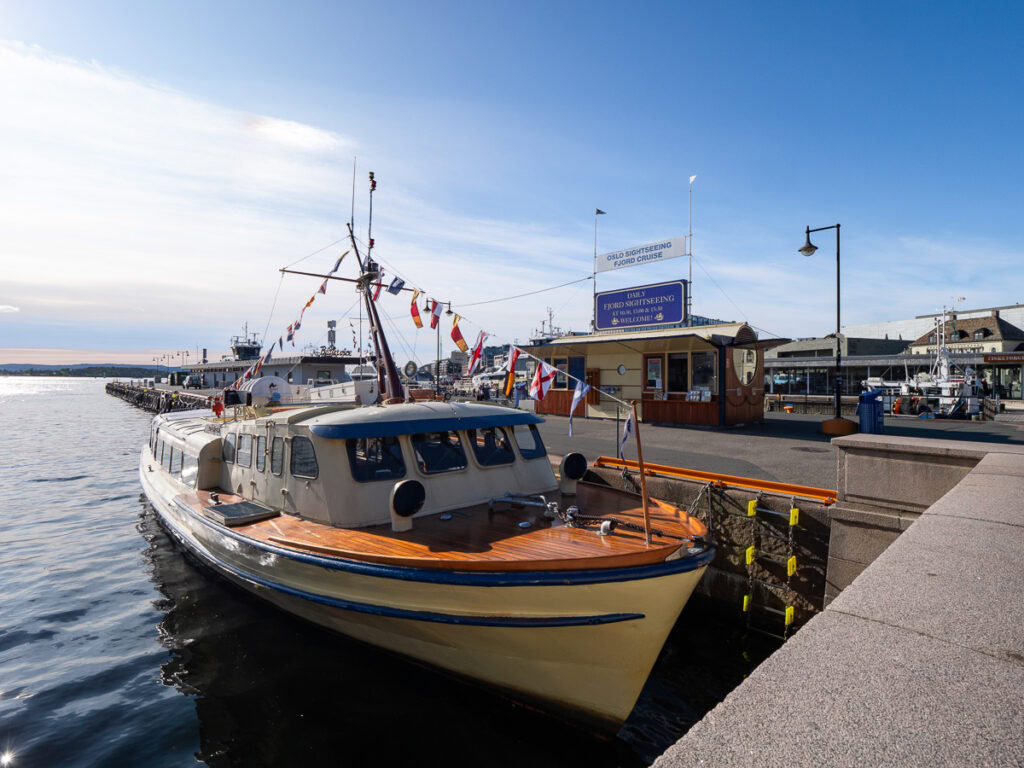
🍂 Autumn (September/October): My faaavourite time in Norway! Fewer tourists, spectacular autumn colours, cheaper prices, drive-able roads, and a good chance for dancing auroras if you can find clear skies with minimal light pollution.
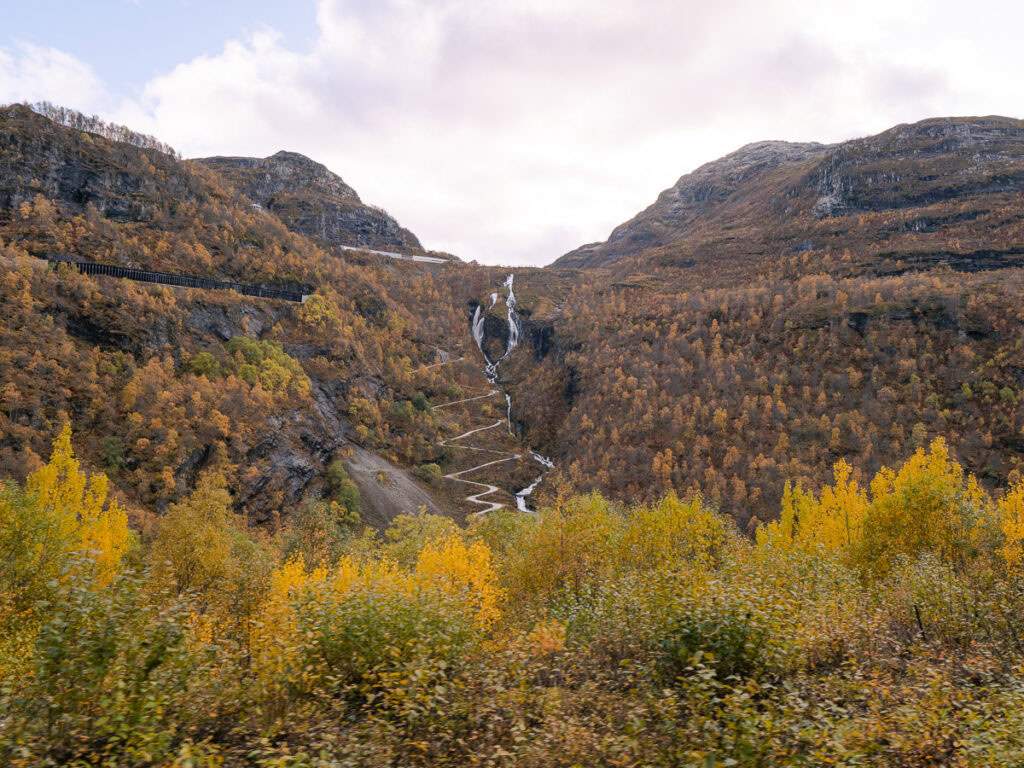
❄️ Winter (November to March): The Arctic at its finest, with impossibly white landscapes for miles, Northern Lights on repeat, and lots of winter activities like snowmobiling, dog sledding and snowshoeing. Limited daylight, difficult driving conditions and super chilly temps, so prepare accordingly.

💐 Spring (April/May): The days get longer, the snow starts to melt, the waterfalls get cranked up to maximum strength, and wildflowers dot the hills as hiking trails reopen. 17 May is Norway’s national day, celebrated with big parades and traditional outfits, so if your trip coincides with this you’ll need to book accomm well in advance.
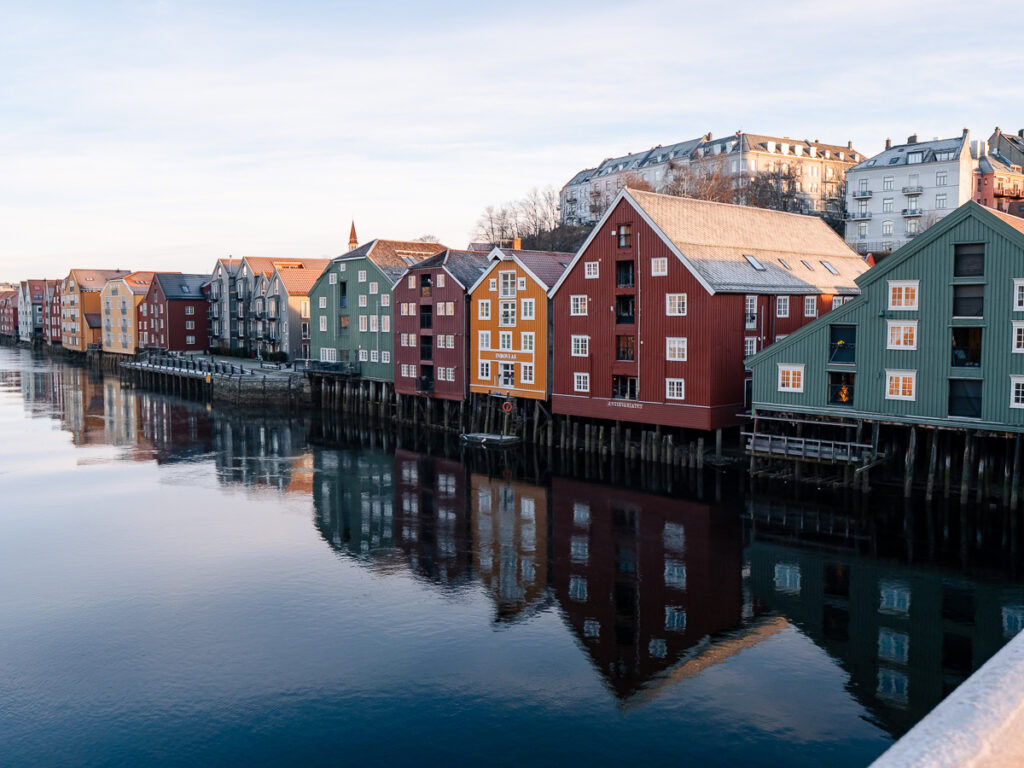
How to get to Norway
✈️ By plane: Fly to Oslo or Bergen if you’re following this recommended 2 week Norway itinerary, there are direct flights from all over Europe (and here are my top tips to find the cheapest flights).
🚃 By train: If you’re already in Europe, you can reach Oslo by train from Sweden or Denmark. Stockholm to Oslo takes around 6 hours, Copenhagen to Oslo is 7-8 hours with a stop in Gothenburg on the way.
⛴️ By ferry: From Denmark, you can catch an overnight ferry from Copenhagen to Oslo (19 hours) or from Hirtshals to Bergen (11h 45m).
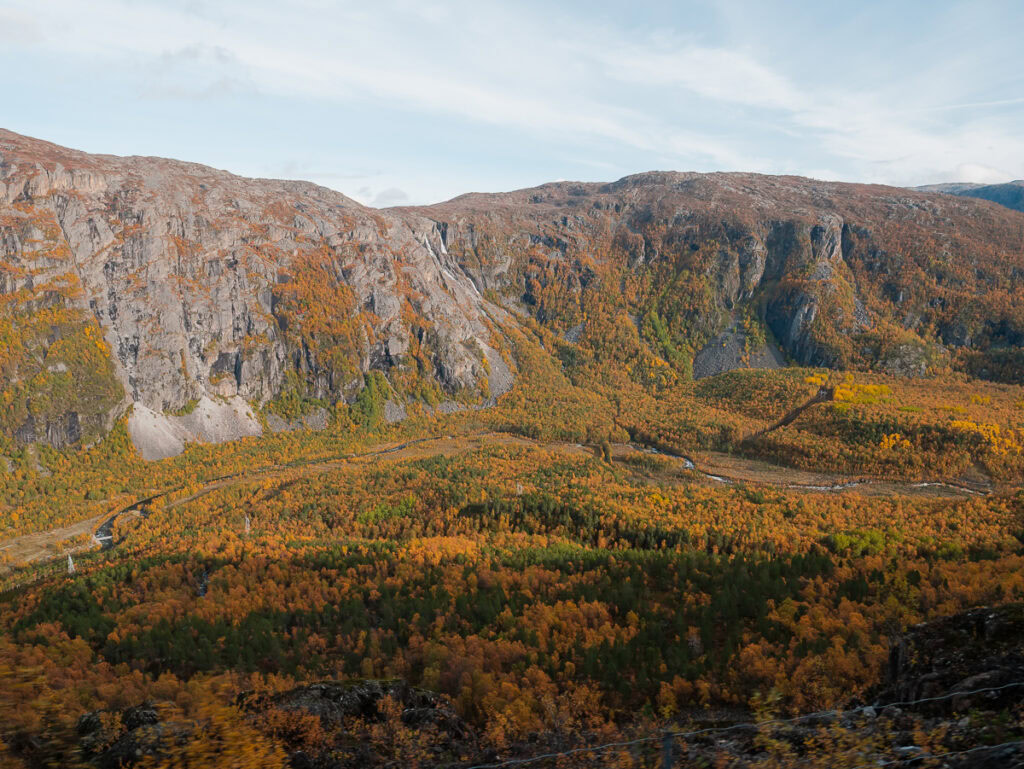
How to get around Norway
🚌 Public transport: Norway’s public transport network varies by region. The Oslo-Flam-Bergen portion of this itinerary is super easy by train, there are long railways connecting Oslo with Trondheim and Trondheim with Bodo, then buses are the way to get around anywhere north of Bodo (and they can be infrequent).
🚗 Rental car: No need for a rental car in Oslo/Bergen, Tromsø can be enjoyed without one too, but the Lofoten Islands are infinitely easier with your own vehicle and in Vesterålen it’s essential. Compare rental car prices on RentalCars.com and Klook.
🚢 Coastal cruise: The iconic Norwegian Coastal Express with Havila Voyages or Hurtigruten is the easiest way to explore Norway from top to bottom, unpack once and soak up the views from the fjords to the Arctic glaciers and everything in between.
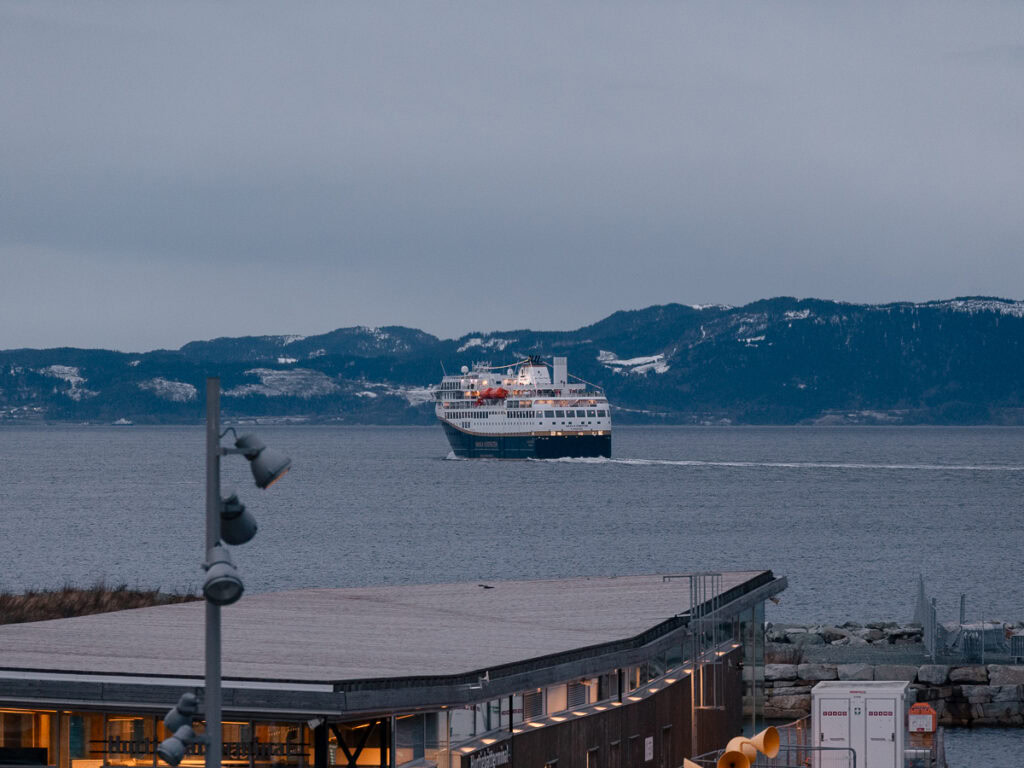
What to budget for this two week Norway itinerary
Norway is one of the most expensive countries in Europe, here’s what to expect.
(Prices are based on shoulder season travel, expect to pay 50-100% more in peak season)
Accommodation
- Budget: €30-50 per night on a hostel dorm or €60-80 for the cheapest private rooms
- Mid-range: €90-120 for simple hotel rooms or apartments, €110-150 for 4* or above
- Luxury: €200+ for most 5* options, €400-600 per night for glamping domes and glass cabins during Northern Lights season
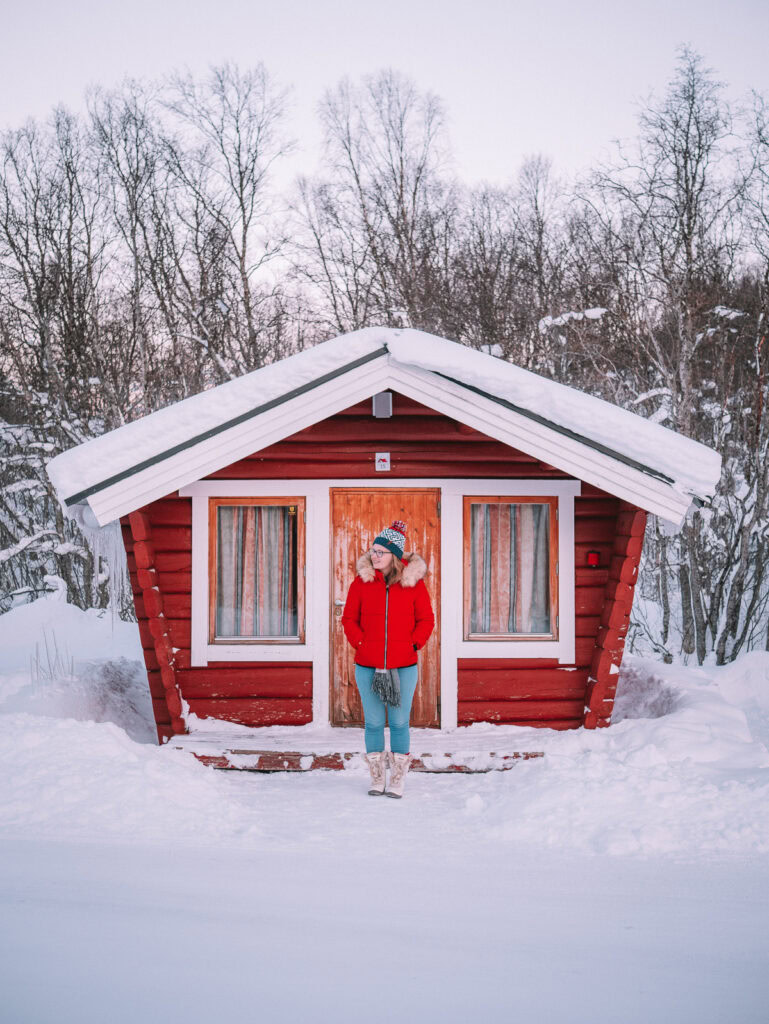

Food
- Budget: €15-30 per day if you’re happy with supermarket meals and bakery treats
- Mid-range: €40-60 to fit in a cheap meal out and a coffee
- Splurge: €120+ per day for restaurant meals and drinks

Transport
- Rental car: From €50-80 per day for the cheapest models if you book in advance, could get significantly more expensive last minute in the Lofoten Islands though
- Norway in a Nutshell: The Oslo-Flam-Bergen journey (including the first two trains, fjord cruise, shuttle bus and final train to Bergen) has seasonal pricing for some of the segments and dynamic pricing for other segments (based on demand), if you book in advance you can get the whole trip from €170 but last minute bookings in summer could cost €250. Do not book the Norway in a Nutshell self-guided tours, they can be as much as twice the price vs. booking it yourself.
- Long-haul trains: If you’re catching the train from Bodo to Trondheim and Trondheim to Oslo, expect to spend anywhere from €30-€80 for long journeys.
- Norwegian Coastal Express: Varies hugely depending on the cabin, voyage length and season. Round Voyages on Havila (11 nights with full board) in the shoulder season start from around €1350 per person for an interior cabin or €2170ish for a cabin with a sea view.
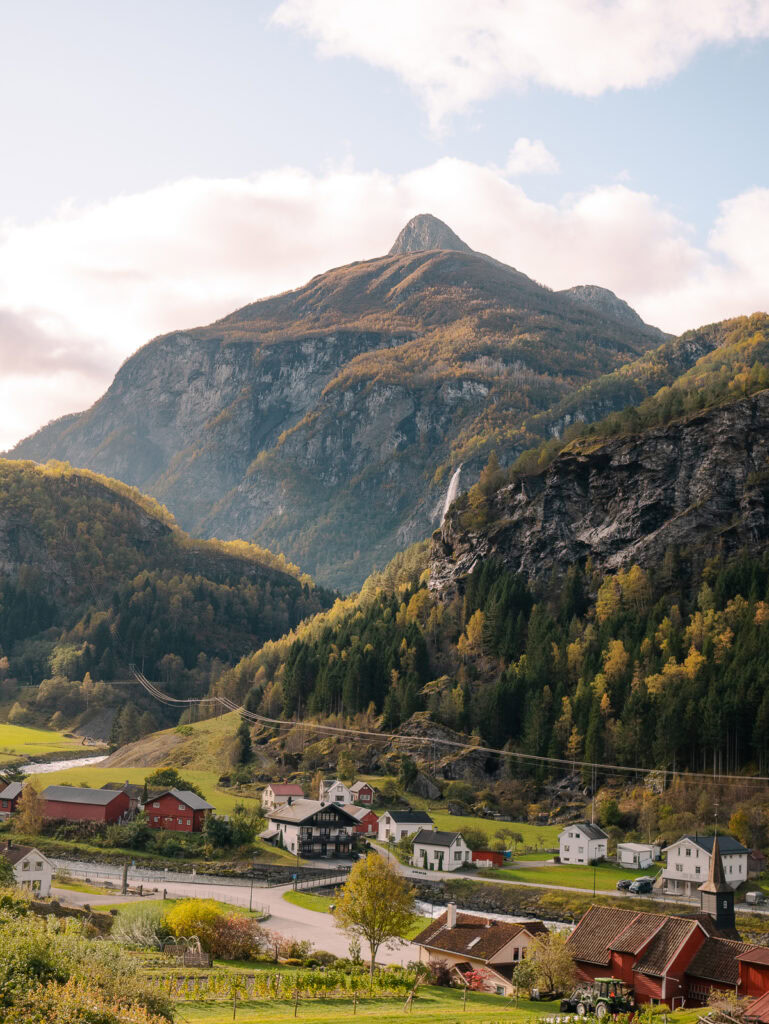
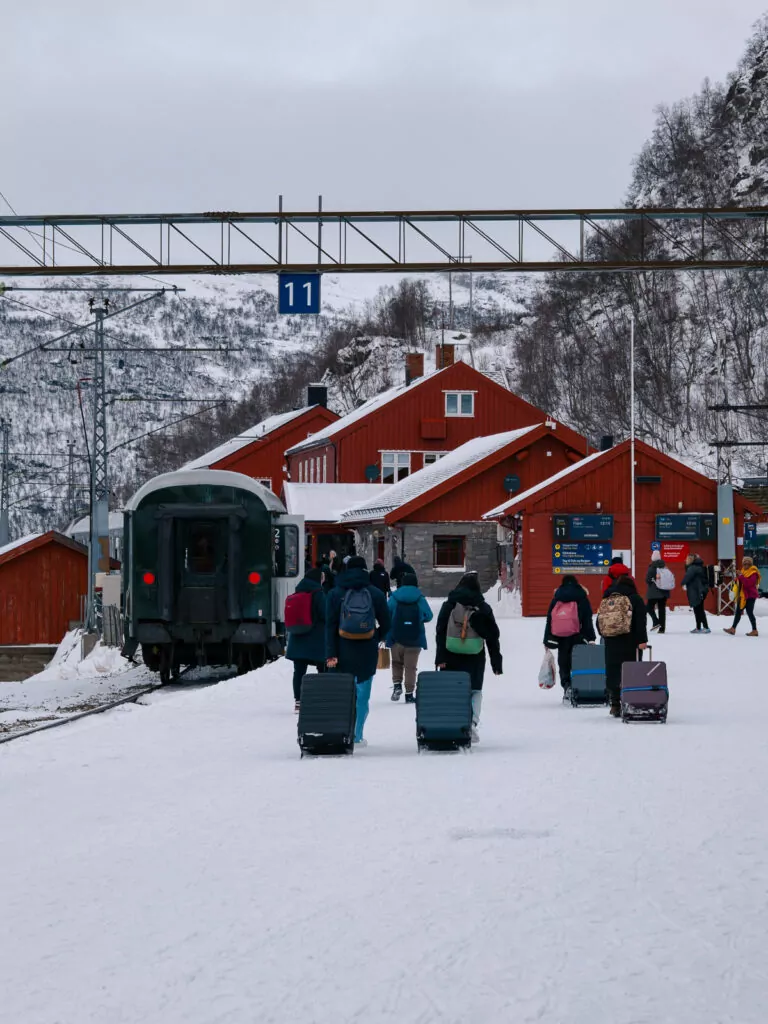
Activities
- This is where your Norway budget adds up, so you need to decide what experiences are most important to you
- Fjord tours from €50-150 depending on how long they are
- Sea eagle, whale watching and fishing tours from €80-140
- Northern Lights chases from €100-180
- Sami cultural experiences from €140-160
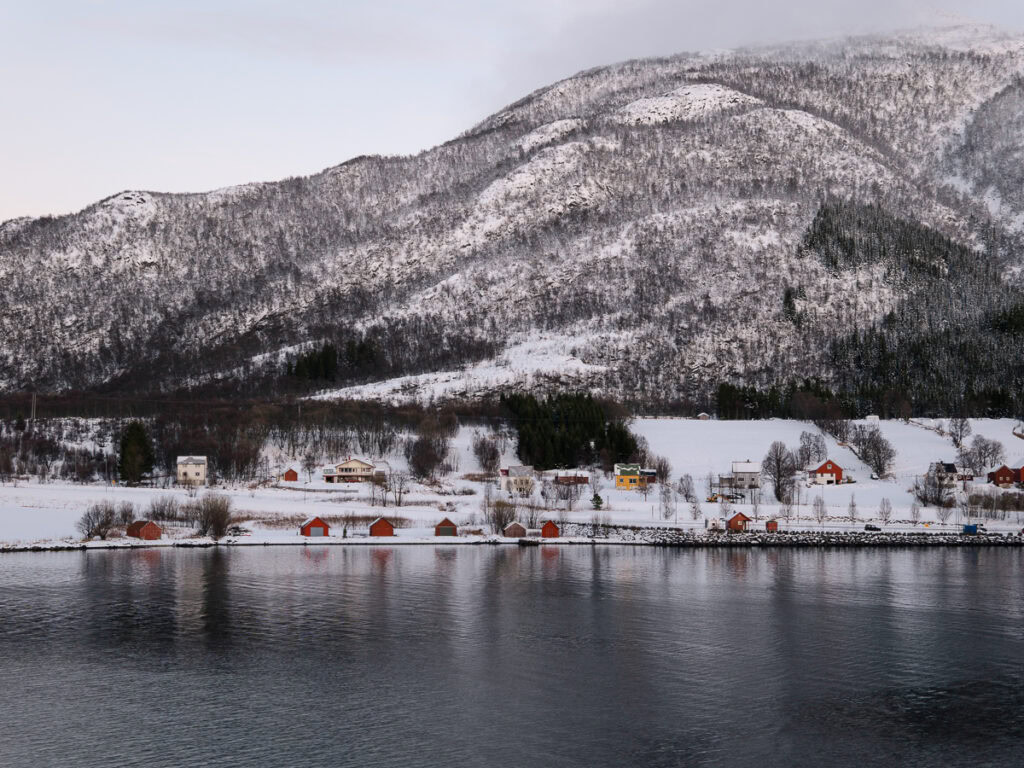
Budget travel tips for Norway
- Travel in the shoulder season: April/May and September/October have the best combo of not-too-cold weather and fewer crowds which means lower prices.
- Book accommodation with kitchen facilities and cook your own meals, dining out in Norway is extremely expensive.
- Never buy bottled water, Norwegian tap water is as good as it gets!
- Have a sober holiday (if you normally drink alcohol). €7-12 for a beer, €9-15 for a glass of wine, €12-20 for a cocktail really starts to hit your travel account.
- Book trains in advance, prices get higher as more tickets are sold.
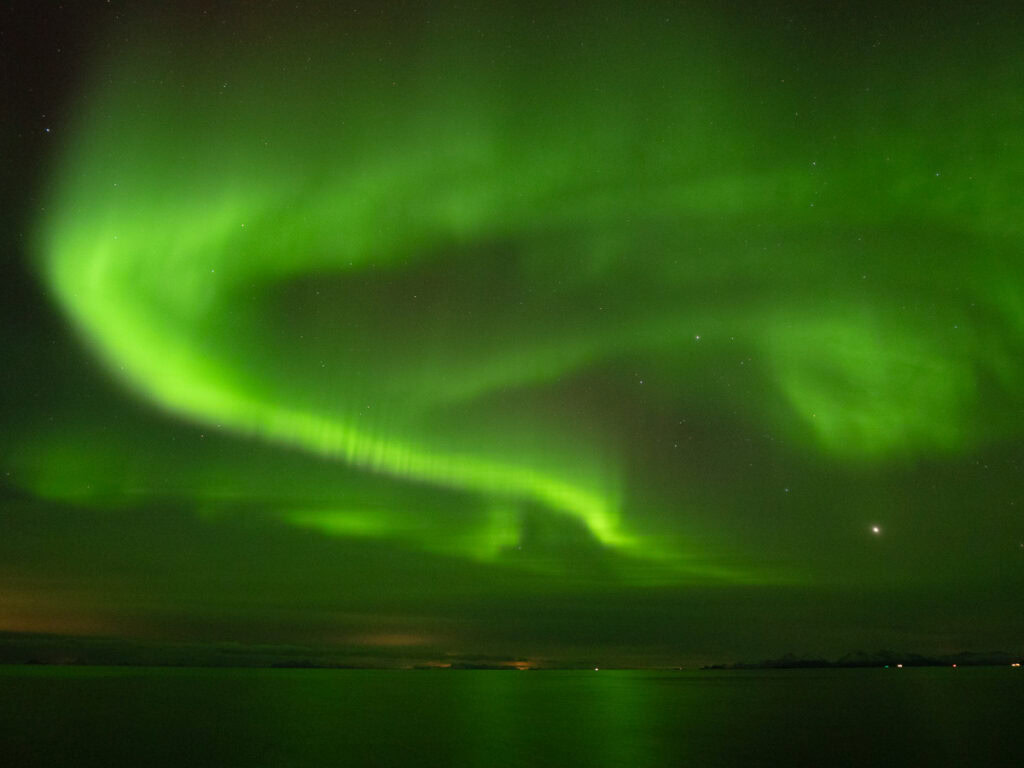
Norway itinerary FAQs
Is Norway safe to visit?
Norway is one of the safest countries in the world in terms of crime rates, the risk of violent crime is very low. Petty crime can occur in busy areas, particularly in central Oslo, so take the usual precautions. The biggest risks in Norway are related to outdoor activities and weather conditions, so dress appropriately, know your limit, and follow local guidelines.
Is Norway safe for solo female travellers?
I felt completely safe in Norway as a solo female traveller, avoid walking alone in unlit areas at night but overall it’s a brilliant place for solo women to explore without too much concern.
Do I need travel insurance for Norway?
Travel insurance is not mandatory for Norway (unless you require a Schengen visa, in which case it’s a requirement of your visa, or take a cruise/group tour which requires insurance) *but* it is highly recommended.
Norway has a decent public healthcare system for urgent care, but non-residents can end up with huge costs for things like emergency evacuation or if your flight gets cancelled and you have to book last minute accommodation.
I use Cover-More Travel Insurance for all my adventures, this is my 4th year with them!
What language do they speak in Norway?
Norwegian is the official language, but English is widely spoken in the cities, tourist areas and tourism industry.
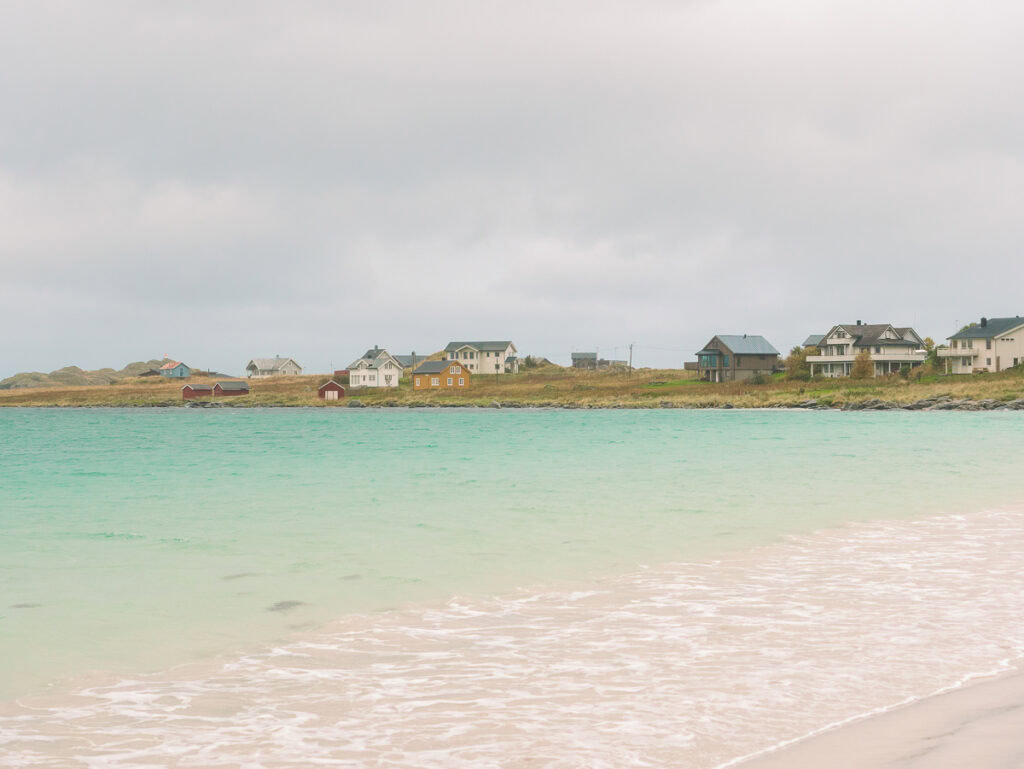
Is the water safe to drink in Norway?
Absolutely, bring your reusable bottle and refill it anywhere.
When can I see the Northern Lights in Norway?
The best time for the aurora in Norway is from September to March, with some sightings in late August/early April if you’re up north and catch a strong display. Sightings obviously can’t be guaranteed and completely rely on aurora activity + dark skies + no clouds, but your best bet of seeing them will be with a Northern Lights chase or on the Norwegian Coastal Route where you’re far from light pollution.
What currency does Norway use?
Norway uses the Norwegian Krone (NOK), not the Euro.
Do I need cash in norway?
Cards are accepted pretty much everywhere, even for small purchases. I’ve been to Norway four times now and have never used cash! The responsible thing would be to have a small amount of cash for emergencies (but clearly I’m not responsible haha).
Should I tip in Norway?
Workers are paid a decent wage throughout Norway, so tipping isn’t a part of the culture and it’s not expected. If you leave a tip it will be appreciated, 5-10% is enough.

How much daylight will I have in winter?
Daylight hours hugely depend on where you are. Areas above the Arctic Circle experience polar night where the sun never rises above the horizon, but the sky does brighten slightly (a beautiful golden hour/blue hour) for a couple of hours in the middle of the day.
Do I need to rent a car in Norway?
Oslo, Flam, Bergen and Tromsø can all be done without a rental car, but for the Lofoten Islands and Vesterålen options in this itinerary you’ll have a much easier trip if you get a vehicle.
How far in advance should I book accommodation?
For summer in Bergen, Flåm and Lofoten, or winter in Tromsø, you should book 3-6 months ahead. For shoulder seasons, 2-3 months is usually sufficient unless you’re travelling during school or public holidays.
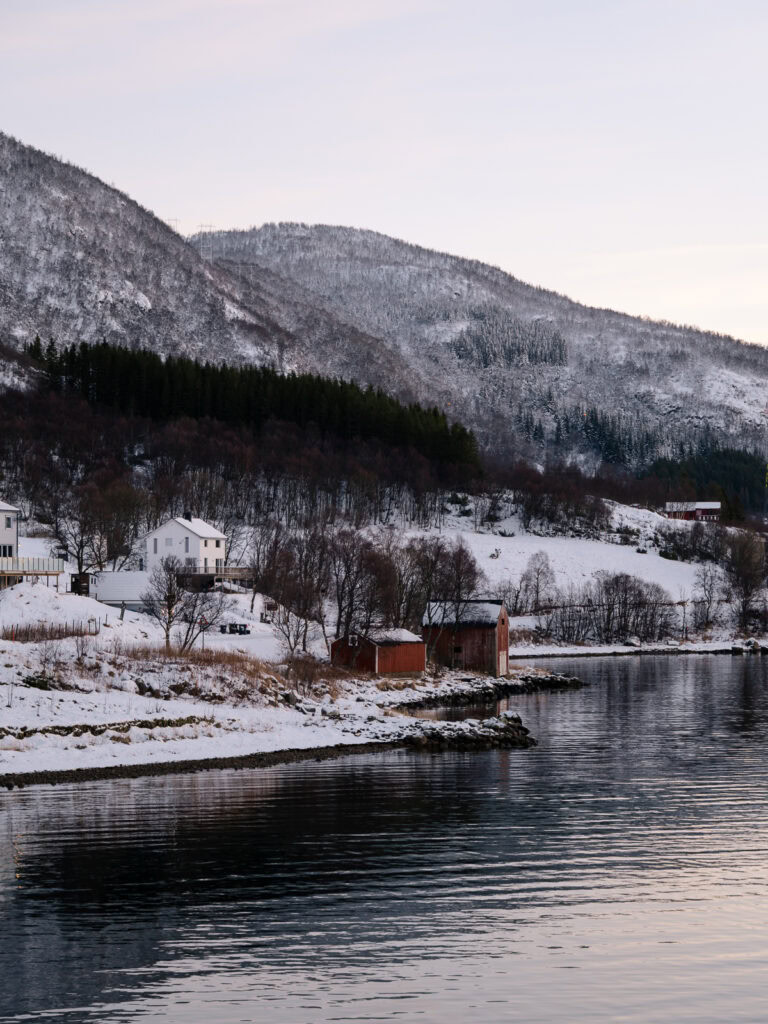
Final thoughts on two weeks in Norway
After multiple trips to Norway and countless hours spent zigzagging across this spectacular country, I can confidently say there’s no single “right way” to experience it.
I adored the stress-free coastal cruise, I took my parents and it was ideal for a family trip, hardly any logistical planning required.
My solo road trip in the Lofoten Islands was full of jaw-dropping moments and about 10,000 photos, but also reminded me of the importance of responsible tourism to remote places and why we need to listen to locals and respect their wishes when we visit.
Exploring Flåm by a combo of zipline, bike, RIB tour, historic train and silent fjord cruise during autumn with changing colours was an absolute treat, and staying overnight after the daytrippers left made it 1000% better.
My Arctic girls’ getaway to Tromsø with my BTFF (best travel friend forever) had me dancing under my first ever aurora at midnight on my 27th birthday.
And I’ve only dipped my toe into the magic of Vesterålen with a day trip excursion from my cruise, but I am already planning to go back!
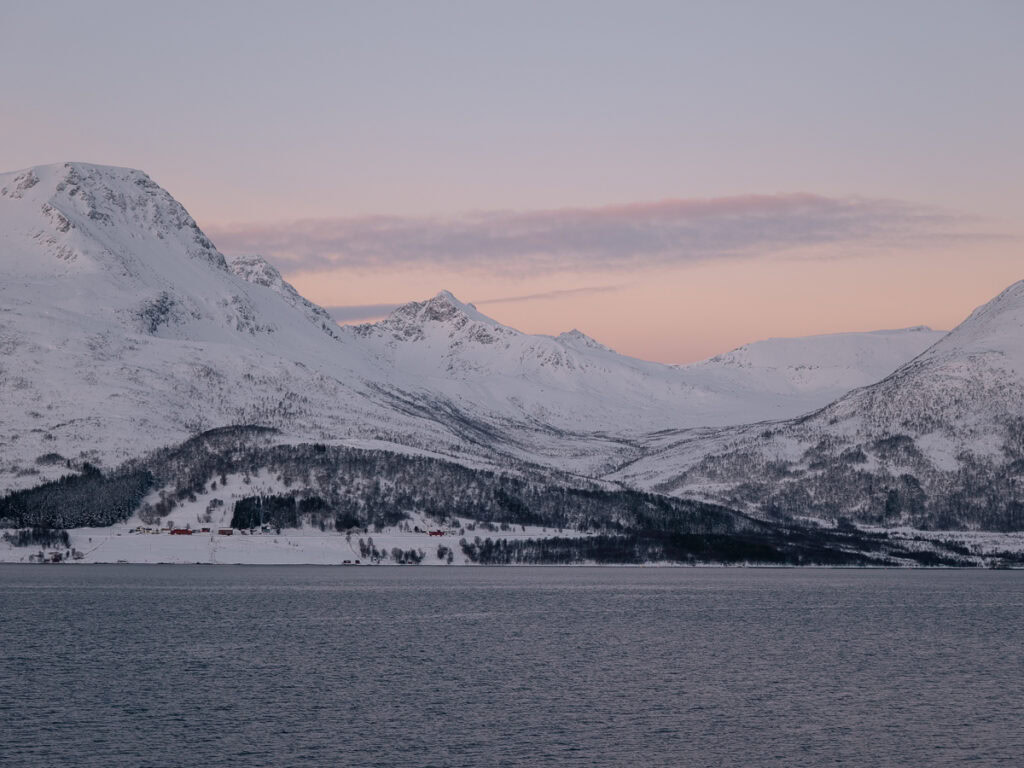
What makes Norway so special isn’t just the UNESCO-listed natural wonders, the impossibly cute coastal villages or the phenomenal coastline, but how accessible these are to connect in a single trip once you’ve figured out the logistics. And that’s exactly what I hope these 2 week Norway itineraries have given you, a blueprint for your own adventure that saves you time, money and stress vs. planning it from scratch yourself.
Which of these itineraries sounds the most appealing to you? Let me know in the comments below! And as always, if you have any questions please drop them in the comments, and I’ll get back to you as soon as I can.
MORE NORWAY & SCANDINAVIA TRAVEL GUIDES:
- The perfect four day itinerary for a quick Norway trip
- Sailing the Norwegian Coastal Route with Havila Voyages
- How to spend three epic weeks in Scandinavia by train
- A solo travel guide to Copenhagen
OTHER NO-FLY EUROPE ITINERARIES YOU MIGHT LIKE:
- How to spend 1, 2 or 3 weeks in Northern Italy & Switzerland
- How to spend two weeks in Poland
- How to spend two weeks in the Balkans
- How to spend two weeks in Albania
- The ultimate two month Europe itinerary
- The ultimate three month Europe itinerary (super comprehensive!)
- How to see Puglia without a car
- How to see the Dolomites without a car
MY GO-TO TRAVEL PLANNING RESOURCES
Flights ✈️ I use Skyscanner to find the best flights for my trip and then I’ll always book direct with the airline to protect myself from having to deal with dodgy third parties if anything goes wrong.
Trains 🚂 If I’m travelling through Europe, I try to travel by train wherever possible! For an extended trip (2+ weeks) I’ll calculate if a Eurail Pass is worth it, or I’ll book point-to-point tickets through RailEurope or the local train operator.
Accommodation 🛎️ I book almost all of my accommodation through booking.com, they have a user-friendly website + app and many of their options are free cancellation, easily cancelled with a simple click of a button.
Activities 🗽I use GetYourGuide, Klook and Viator to look for activities in the places I visit, or I just Google ‘things to do in [city]’! P.S. If you book anything on Klook you can use the promocode FINDINGALEXXKLOOK to get 10% off
Travel cards 💳 I’m a Wise gal through and through, they’ve been my chosen travel card for more than five years now. You can easily top up your card from your bank account or through Apple Pay, convert your money to local currency, and spend money with minimal fees and the best exchange rates around.
Travel insurance 🩺 I use Cover-More NZ travel insurance for my own trips, I have a comprehensive policy and I’ve only had good experiences with them. Cover-More also has an Australian company, but if you’re from elsewhere then two popular insurance options for global travellers are SafetyWing (cheaper policy, lower coverage) and World Nomads (more expensive but significantly better coverage).
Luggage 💼 I travel with Samsonite Cosmolite suitcases, one 75cm check in bag and a 55cm carry on bag, and I absolutely adore them and will never travel with anything else! They are SUPER lightweight (2.8kg and 1.9kg respectively) so I have much more space for my actual stuff.
Camera gear 📸 I use a iPhone 15 Pro Max for phone photos/videos, and my camera kit includes a Lumix S9 (incredible lightweight full-frame camera, a game changer for travel creators!) with a 20-60mm lens, a Lumix G9 with an 8-18mm and 12-60mm lens, a DJI Mini 3 Pro drone and a GoPro Hero 10. I do all my writing and editing on my ASUS Zenbook 14, it’s lightweight but powerful enough for photo editing and intense blogging sessions.
